URUTERAJ



















Number 05, May 2016
IEM Registered on 1 May 1959
MAJLIS BAGI SESI / IEM COUNCIL SESSION /
YANG DIPERTUA / PRESIDENT
Ir. Tan Yean Chin
TIMBALAN YANG DIPERTUA / DEPUTY PRESIDENT
Ir. David Lai Kong Phooi
NAIB YANG DIPERTUA / VICE PRESIDENTS
Ir. Prof. Dr Ruslan bin Hassan, Ir. Lai Sze Ching, Ir. Lee Boon Chong,
Ir. Prof. Dr Jefre Chia g Choo g Lui , Ir. Asso . Prof. Dr Norlida t Bu i a i ,
Ir. Ellias Bin Saidin, Ir. Ong Ching Loon
SETIAUSAHA KEHORMAT / HONORARY SECRETARY
Ir. Yam Teong Sian
BENDAHARI KEHORMAT / HONORARY TREASURER
Dr Wang Hong Kok
BEKAS YANG DIPERTUA TERAKHIR / IMMEDIATE PAST PRESIDENT
Y.Bhg. Dato’ Ir. Li Cho Ho k
BEKAS YANG DIPERTUA / PAST PRESIDENTS
Y.Bhg. A ade i ia Ta Sri Dato’ Ir. Dr Hj. Ah ad )aidee i Laidi , Y.Bhg. Dato’ Ir. Dr
Gue See Se , Y.Bhg. Dato’ Paduka Ir. Keizrul i A dullah, Y.Bhg. A ade i ia Dato’ Ir.
Prof. Dr Chuah Hean Teik, Ir. Choo Kok Beng
WAKIL AWAM / CIVIL REPRESENTATIVE
Ir. Prof. Dr Mohd. )a i i Ju aat
WAKIL MEKANIKAL / MECHANICAL REPRESENTATIVE
Ir. Dr Kannan M. Munisamy
WAKIL ELEKTRIK / ELECTRICAL REPRESENTATIVE
Y.Bhg. Dato’ Ir. Dr Ali Askar i Sher Moha ad
WAKIL STRUKTUR / STRUCTURAL REPRESENTATIVE
Ir. Hooi Wing Chuen
WAKIL KIMIA / CHEMICAL REPRESENTATIVE
Ir. Prof. Dr Tho as Choo g Shea Ya
WAKIL LAIN-LAIN DISPLIN / REPRESENTATIVE TO OTHER DISCIPLINES
Ir. Roz a i A dul Rashid
WAKIL MULTIMEDIA DAN ICT / ICT AND MULTIMEDIA REPRESENTATIVE
Mr. A dul Fatah i Mohd. Yai , M.I.E.M.
AHLI MAJLIS / COUNCIL MEMBERS
Ir. Gar Li E g H a, Y.Bhg Dato’ Ir. Hj. Noor Az i i Jaafar, Ir. Dr A i uddi i Mohd Baki, Ir. Mohd Radzi i Salleh, Ir. O g Sa g Woh, Ir. Mohd Khir i Muha ad, Y.Bhg Dato’ Ir. Hj. Ha api Bi Moha ad Noor, Ir. Dr Ah ad A uar i Oth a , Ir. Ishak i A dul Rah a , Ir. Cho g Pi k E g
PE Cho g , Ir. Ng Yo g Ko g, Ir. Teji der Si gh, Ir. Sreedara a/l Ra a , Ir. Roger Wo g Chi We g, Ir. Asso . Prof Dr. Ah ad Ka il i Arshad,
Ir. Dr Tan Kuang Leong, Ir. Hoo Choon Sean, Y.Bhg. Lt. Jen. Dato’ Wira Ir. Ismail i Sa io Ret. RMAF , Ir. Hj. A uar i Yah a, Ir. Mah Wa She g, Ir. Gu asagara a/l Krist a , Ir. Che Har Shea , Ir. Mohd A a i Hj. Idris, Ir. Gopal Naria Kut , Ir. Yap Soo Hoe, Ir. Sa thaku ara a/l Erusa
PENGERUSI CAWANGAN / BRANCH CHAIRMAN
1. Pulau Pinang: Ir. Dr Mui Kai Yin
. Selata : Ir. Asso . Prof. Ha ai i i A dullah
3. Perak: Ir. Lau Win Sang
. Kedah-Perlis: Ir. Hj. A dullah i Oth a . Negeri Se ila : Ir. Shahri A ri i Jahari
. Kela ta : Ir. Hj. Mohd )ai i A d. Ha id . Tere gga u: Ir. Ate i i Sulo g
8. Melaka: Ir. Dr Tan Chee Fai
. Sara ak: Ir. Haidel Heli
. Sa ah: Ir. Hj. Yahi a i A a g Kahar
. Miri: Ir. Paul Chie Lik I g
12. Pahang: Y. Bhg. Dato’ Ir. T . Hj. A dul Jalil i Hj. Moha ed
AHLI JAWATANKUASA INFORMASI DAN PENERBITAN / STANDING COMMITTEE ON INFORMATION AND PUBLICATIONS / Pengerusi/Chairman: Ir. Prof. Dr Ruslan Hassan Nai Pe gerusi/Vi e Chair a : Ir. Mohd. Khir Muha ad Seiausaha/Se retar : Ir. Lau Tai O Ketua Pengarang/Chief Editor: Ir. Prof. Dr Ruslan Hassan Pe gara g Bulei /Bullei Editor: Ir. Mohd. Khir Muha ad Pe gara g Pri sipal Jur al/Pri ipal Jour al Editor: Ir. Prof. Dr Do i i Foo Ch a Yee
Pe gerusi Perpustakaa /Li rar Chair a : Ir. C.M.M. A oo u ker
Ahli-Ahli/Co itee Me ers: Y.Bhg. Datuk Ir. Prof. Dr O Chee She g, Mr. A dul Fatah i Moha ed Yai M.I.E.M., Ir. Dr Kannan a/l M. Munisamy, Ir. Chin Mee Poon, Ir. Yee Thien Seng, Ir. Ong Guan Hock, Dr Wang Hong Kok F.I.E.M., Ir. Dr Oh Seong Por, Ir. Dr A i uddi Mohd Baki, Ir. Teji der Si gh
LEMBAGA PENGARANG/EDITORIAL BOARD 2015/2016
Ketua Pengarang/Chief Editor: Ir. Prof. Dr Ruslan Hassan
Pe gara g Bulei /Bullei Editor: Ir. Mohd. Khir Muha ad Pe gara g Jur al/Jour al Editor: Ir. Prof. Dr Do i i Foo Ch a Yee Ahli-ahli/Co itee Me ers: Ir. O g Gua Ho k, Ir. Lau Tai O , Ir. Yee Thie Se g, Dr Wang Hong Kok F.I.E.M.
Secretariats: Janet Lim, May Lee

COVER NOTE
Connecting Members Nationwide 5
COVER STORY



57th IEM Annual Dinner & Awards Night 2016 6 - 11
PRESIDENTIAL ADDRESS 2016
“Rejuvenation of the Institution for Long Term Sustainability” 12 - 16
FEATURE ARTICLES
Quality Assessment System in Construction ........18
From Bullock Carting to Engineering ....................28 18 - 34
FORUMS
IEM Forums at ASEAN’s Mechanical and Electrical Engineering Expo ................................36 36 - 39
GLOBE TREKKING
Baja’s Forest Man 44
PINK PAGE
Professional Interview
BLUE PAGE
45
Membership List 46 - 48

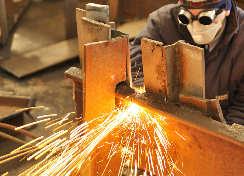
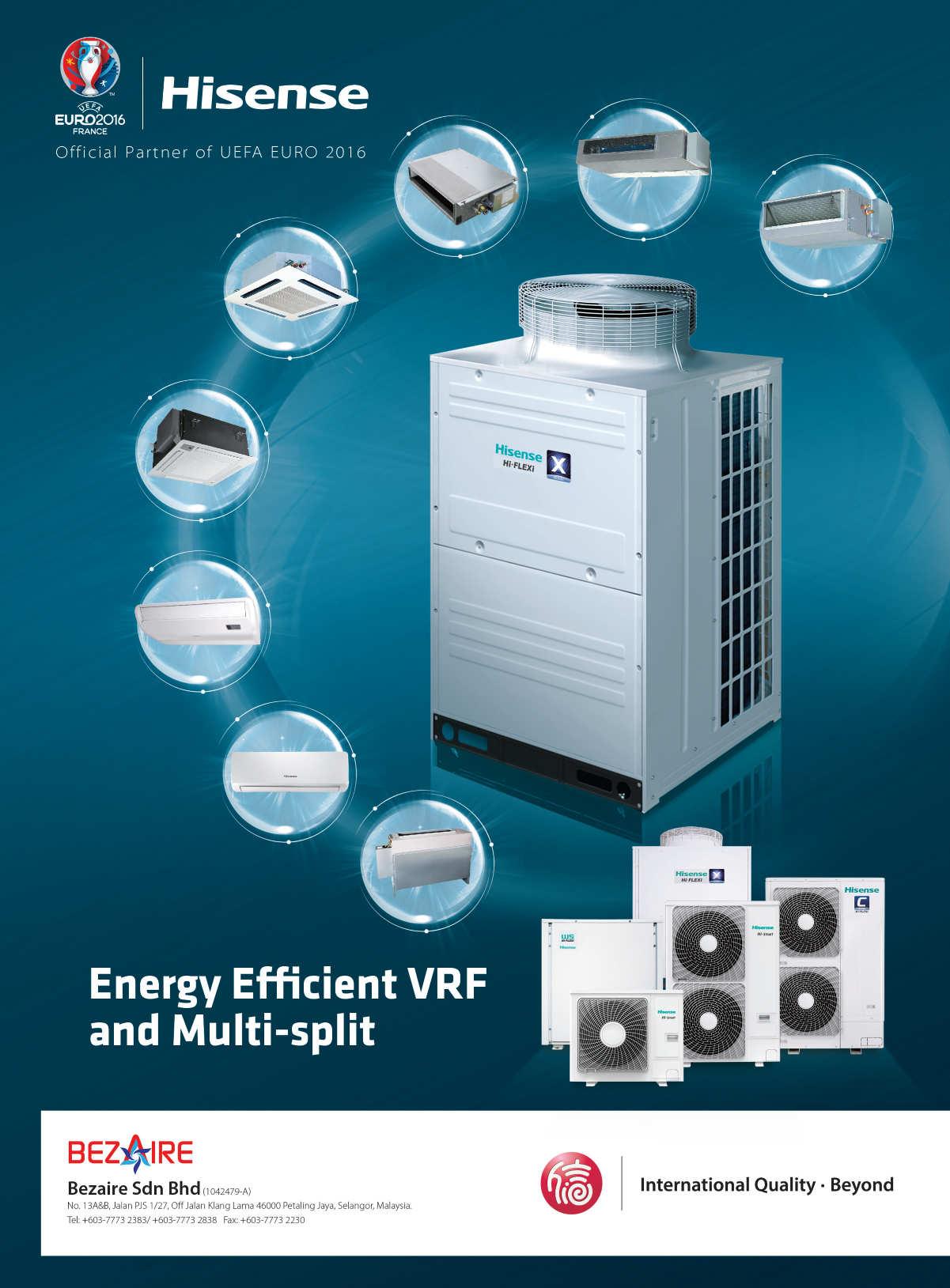

This month’s JURUTERA is the first issue for 2016/2017, with Ir. Tan Yean Chin at the helm of Institution of Engineers Malaysia. Here, we highlight his visions for IEM to continue to grow its membership and to stay relevant for long-term sustainability. Ir. Tan also speaks on the importance of promoting science, technology, engineering and mathematics (STEM) in Malaysia as this will affect the number of potential members in the future.
With a circulation of 20,000 printed copies (and an online version) monthly, made available to 40,000 members, of which a large percentage comprises graduate and student categories, JURUTERA certainly plays a significant role as the mouthpiece of the Institution and connects its members across the nation. Our priority for JURUTERA is its timely delivery, with features and articles ofinterest to and which are relevant to IEM members.
With 8 standing committees, 18 technical divisions, 3 special interest groups, young engineer and women engineer sections, as well as 12 branches nationwide, it is certainly a challenge for JURUTERA to balance the needs and to fulfill requirements of all stakeholders. This is no easy task as our members come from so many disciplines of engineering.
Over the years, we have improved on the date of delivery and contents by reviewing workflow process and coordination work amongst the editorial team. Recently we also reviewed the editorial policy and developed plans for the continued improvement of JURUTERA, and this will be reflected from the January 2017 issue. To be able to do this, however, we will require the support of all members to keep contributing quality articles and features of interest to our fraternity.
We thank the Editorial Board members of last session (2015/2016) for their contributions and voluntary services and we welcome the new line-up of the Standing Committee and Editorial Board for 2016/2017.
DIMENSION PUBLISHING SDN. BHD. (449732-T)
Le el - - , PJX-HM Shah To er, No. A, Persiara Barat, Petali g Ja a, Sela gor Darul Ehsa , Mala sia.
Tel: + Fa : +
E- ail: i fo@di e sio pu lishi g. o
We site: .di e sio pu lishi g. o
For ad erise e t pla e e ts a d su s ripio s, please o ta t:
DIMENSION PUBLISHING SDN. BHD. (449732-T) at + , or E- ail: i fo@di e sio pu lishi g. o
Su s ripio Depart e t
E- ail: i fo@di e sio pu lishi g. o
Pri ted
HOFFSET PRINTING SDN. BHD. -V No. , Jala TPK / , Ta a Peri dustria Ki rara, Pu ho g, Sela gor Darul Ehsa , Mala sia. Tel: + Fa : +
Mailer
PERFECT MAIL
Chair a ROBERT MEBRUER
CEO/Pu lisher PATRICK LEUNG
Ge eralMa ager SHIRLEY THAM shirley@dimensionpublishing.com
HeadofMarkei g&Busi essDe elop e t JOSEPH HOW joseph@dimensionpublishing.com
Editor TAN BEE HONG bee@dimensionpublishing.com
Co tri ui gWriters PUTRI )ANINA & )OE PHOON putri@dimensionpublishing.com zoe@dimensionpublishing.com
Se iorGraphi Desig er SUMATHI MANOKARAN sumathi@dimensionpublishing.com
Graphi Desig er NABEELA AHMAD beela@dimensionpublishing.com
Ad erisi gCo sulta ts A)IM SHAARI & THAM CHOON KIT azim@dimensionpublishing.com ckit@dimensionpublishing.com
A ou ts u Ad i E e ui e YEN YIN yenyin@dimensionpublishing.com
COPYRIGHT
by Zoe Phoon

he weather was balmy and the night was calm. With that, the 57th IEM Annual Dinner & Awards Night 2016 took off on a bright note as fellow engineers, government representatives,corporatecaptains,entrepreneurs,professionals, contractors, suppliers and other industry stakeholders gathered to celebrate the much anticipated occasion.
The Institution’s annual event was held at Sunway Resort Hotel & Spa in Bandar Sunway, Selangor. The guest of honour was YB Dato’ Sri Liow Tiong Lai, the Honourable Minister of Transport, Malaysia. The event was hosted by the newly elected IEM President for the 2016-2017 session, Ir. Tan Yean Chin. IEM’s Immediate Past President, Dato’ Ir. Lim Chow Hock, the newly elected Vice Presidents, Honorary Secretary as well as members of the IEM Excomm and Council were also present to support the President in hosting dignitaries and VIP guests from the engineering field.
The cocktail and pre-dinner reception began at about 7.00p.m. YB Dato’ Sri Liow arrived at 7.45p.m. and shortly after, was ushered into the grand ballroom. The LED Butterfly Dance followed and an eight-course dinner commenced thereafter. The evening continued with EB Duet, a vocal and guitar jazz

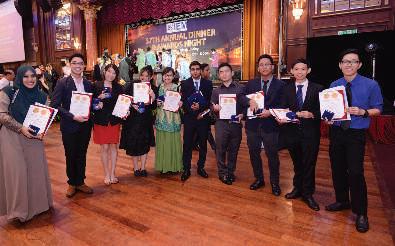

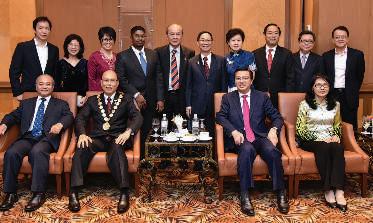
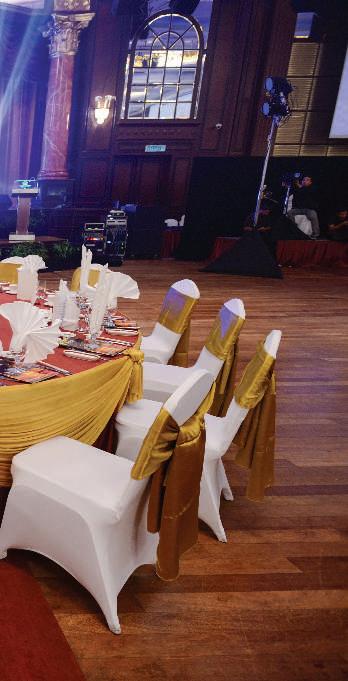
duo from Malaysia entertaining the guests as they dined with light jazz numbers.
Some 45 minutes into dinner, Ir. Tan, and later YB Dato’ Sri Liow, delivered their respective speeches.
IEM, one of the largest professional organisations in the country, has a membership of 40,208 as of March 1, 2016, including Student Members. Its need to remain relevant to ensure its long term sustainability and survival set the tone of Ir. Tan’s message that evening.
He said that with impending changes and development of more engineering disciplines, it is important that IEM evolves and stays relevant with the ever-changing engineering landscape.
“Therefore, we need to ‘rejuvenate’ IEM so that we can continue to grow and stay relevant for long-term sustainability.
“In addition, with a big pool of engineers working in new and non-traditional engineering sectors, IEM would target them for membership, cater for their needs and
open up opportunities for them to participate actively in IEM. Of course, this is no easy task,” he said, inviting all IEM members to work together to achieve the vision of a rejuvenated and sustainable institution.
“I believe with our collective efforts, IEM will continue to excel in our excellent tradition that has been laid down in the past while rejuvenating to face new challenges ahead,” he added.
Earlier in the day at IEM’s annual general meeting (AGM), in his presidential address entitled “Rejuvenation of the Institution for long-term sustainability”, Ir. Tan underscored the need to take necessary steps to ensure a prominent future for IEM.
According to him, while the Institution has been successful in providing benefits to members in the form of technical talks, short courses, seminars, conferences, site visits and other welfare and social events, the key challenge ahead is to remain relevant in a complex and ever changing world.
He commented that in IEM’s early years (1960s to 1980s), most of the founding office bearers and members came mainly from traditional engineering disciplines such as civil, mechanical, electrical and chemical and worked in traditional engineering sectors like government service, education, construction, power and consultancy which played key roles in building a young nation.
However, changes and development of more engineering disciplines emerged as the economy diversified and modernised. Ir. Tan said that IEM cannot continue to rely solely on the few traditional engineering disciplines for membership. IEM realises that there is a big pool of engineers working in non-traditional engineering sectors and has therefore created the Companion grade of membership to cater to their needs.
He also said that for IEM’s long-term sustainability, Graduate Members should be a main force behind its rejuvenation.
He added: “It will be a big mistake on our part to not recognise how important these Graduate Members are to IEM and our future. We should encourage them to be more active in IEM by giving them bigger and more important roles to play.
“Similarly, this change should also apply to the Companion grade members who are academically qualified and have the necessary training experience and exposure in the engineering profession.”
He said it is important to acknowledge that not all engineers wish or are able to register as IEM’s Corporate Members because of their job function, experiences and different needs for career development.
“Not being able to fulfill requirements set for the Professional Interview and to be granted Corporate Membership does not make them any less an engineer than Corporate Members. The difference is that they may be practising in sectors that do not require them to develop skills and experiences set in the Professional Interview process,” he said.
“Therefore, if IEM still holds on to the outdated belief that only Corporate Members can play an important

role in IEM, then its long-term sustainability and survival will be severely threatened.”
He noted most of the GraduateandCompaniongrade members are below 40 years of age. With their participation in the main committees of IEM, they will be able to rejuvenate and bring in new ideas to help IEM to attract and cater to the younger generation of engineers.
“
W
e need to ‘rejuvenate’ IEM so that we
can continue to grow and stay relevant for long-term sustainability. IEM cannot rely solely on the traditional engineering disciplines for membership. There is a big pool of engineers working in non-traditional engineering sectors. IEM shall target them for membership and cater to their needs.”
Ir. Tan reiterated that if IEM does not change now, it will find that other newly formed organisations or existing ones will attract young engineers and even IEM’s Graduate Members to join these organisations by making them feel more needed, appreciated and giving them a better platform to perform.
Ir. Tan also spoke on the importance of promoting science, technology, engineering and mathematics (STEM), stressing that a declining interest in these subjects is detrimental to a developing country like Malaysia. And with fewer graduates in STEM fields, the number of engineering graduates will be adversely affected and in turn will reduce the number of potential IEM members in the future.
Already, IEM is one of the initiators and part of the steering committee of the Kuala Lumpur Engineering and Science Fair (KLESF) programme to enhance the interest of school children and teenagers in science. The programme comprises activities to promote the importance of science, technology and innovation and facilitate students to interact with engineering and science professionals to complement the existing school STEM curriculum with more hands-on learning components. The activities also aid the outreaching of STEM to suburban and rural communities, and enhance science literacy among the general public.
At the AGM, Dato’ Ir. Lim Chow Hock officially handed over the Presidential Chain of Office to Ir. Tan, who also holds the post of Secretary-General of the Federation of Engineering Institutions of Asia and the Pacific (FEIAP). A professional engineer and an Accredited Checker (Geotechnical) registered with BEM, he is also a registered ASEAN Chartered Professional Engineer (ACPE), an honorary Fellow of the ASEAN Federation of Engineering Organisations (AFEO), registered engineer in the APEC and the International Professional Engineer Register, Fellow of IEM and Fellow of the ASEAN Academy of Engineering & Technology (AAET).
He obtained his Bachelor Degree in Civil Engineering with First Class Honours from Universiti Technologi Malaysia in 1992 and Master’s Degree in Geotechnical Engineering and the Chin Fung Kee Prize for outstanding academic performance from Asian Institute of Technology, Bangkok, in 1994. Currently, he is a senior director in G&P Professionals Sdn. Bhd., a multidisciplinary engineering consulting firm.
Meanwhile, YB Dato’ Sri Liow, in his speech at the annual dinner and awards night, said that with the current economic
crisis and resource constraints, the need to innovate is even greater.
“With our budget deficit estimated to reach 4.5% of gross domestic product (GDP) this year and the continued slump in oil and commodity prices, how will the government achieve future infrastructure development and maintenance at a level that we are used to?”
“We need to work together to answer this question. What is for certain is that we are not going to achieve it through conventional procurement and engineering practices. This is where IEM and its 40,000 members can help. Help us find new ways to build the much-needed infrastructure at lower costs.”
On another note, he called on IEM members to take part in the opportunities arising from China’s One Belt-One Road Regional Strategy, or the Belt-Road strategy in short, which aims to promote infrastructure development in Asia, the Middle East, parts of Europe, South Asia and Southeast Asia to enable deeper economic cooperation. He said the recent bilateral talks with China also touched on possible future projects between the two countries.
The Minister also said that the role of IEM and its members is becoming increasingly vital given regional developments such as ASEAN has embarked on land transport infrastructure integration and intermodal interconnectivity with principal airports, ports as well as inland waterway and ferry links.
Furthermore, ASEAN is set to promote coordinated efforts at the policy and operation levels to develop ASEAN land transport trade corridors. He said the worrying data about people killed on the roads annually, as stated in the 2013 World Health Organization Global Status Report on Road Safety, shows a crucial need for collective effort to reduce the risk of road crashes.
On human capital, he pointed out that engineers, being at the forefront of the current development transformation in Malaysia, will also need to ensure that future growth is sustainable.
For sustainable growth, a sufficient supply of bright, well educated and well motivated young people entering engineering in various disciplines would be essential as the country’s economy transforms and modernises.
“In this respect, IEM has the duty and task of relaying the current engineering opportunities and challenges as well as inspire up-and-coming engineers to find new and creative solutions,” YB Dato’ Sri Liow added.
Violinist Dr Joanne Yeoh, a lecturer in music at Universiti Putra Malaysia took to the stage at 9.00p.m. to entertain the audience for the next 20 minutes.
That was followed by the highlight of the evening – the presentation of awards and recognition from IEM for outstanding academic performance, exemplary service to
the engineering industry and commendable contribution to the Institution. Ir. Tan Yean Chin did the honours in giving away the awards (please see tables on award recipients).
Each of the 26 recipients took home the IEM Gold Medal Award 2015 for the best engineering students in local universities.
The IEM Presidential Awards of Excellence 2015 for the Most Active Technical Division were presented to Technical Divisions which had performed well in terms of activities, generating income and organising seminars and courses for the year.
For the Merit Award, 5th placing, Ir. Thavananthan received the Certificate for Chemical Engineering Technical Division; and for the Merit Award 4th placing, Ir. Lee Peir Tien received the Certificate for Geotechnical Engineering Division. For the Most Improved Technical Division, Ir. Andrew Yeow received certificates and an Appreciation Meal for the Tunnelling and Underground Space Technical Division.
The top three best performers amongst the twenty-two Technical Divisions of the Institution were the Mechanical Engineering Technical Division (METD), Electrical Engineering Technical Division (EETD) and the Women Engineer Section in that order. METD, which was champion for the 10th time, was represented by Ir. Dr Kannan M. Munisamy while runnersup, EETD was represented by Ir. Yau Chau Fong. Women Engineer Section, a newbie to the PAOE awards, won third place, a giant leap from the improved position last year. It was represented by Ir. Dr Leong Wai Yie.
Next in line was the Most Supportive Award, a set of awards for organisations/individuals to encourage employees/fellow engineers and colleagues to be Graduate and Corporate Members of IEM. Based on successful applications, the award’s purpose is to recognize individuals or organisations who had been supporting IEM in membership recruitment.
Ir. Hj. Harizan bin Che Mat Haris received the Most Supportive Award for Graduate Membership for Individual category while Dato’ Prof. Emeritus Dr Hassan Said, Vice Chancellor of Universiti Teknologi Mara (UiTM), received the Most Supportive Award for the Graduate Membership for Organisation category as well as the Most Active Organisation in Membership Drive on behalf of the university.
In addition, IEM recognised Tenaga Nasional Bhd. and JPS (the Department of Irrigation and Drainage) as “the most supportive organisations” to encourage corporate members to become members of IEM.
ThehighlightoftheeveningwasthepresentationoftheIEM Award for Contribution to Engineering Industry. Five companies wereidentifiedfortheircontributiontotheengineeringindustry in the various categories. Sunway Integrated Properties Sdn. Bhd. received the award for property development, Gamuda Bhd. for transportation, Pestech International Bhd. for energy, Ekovest for wastewater management and Taliworks Corporation Bhd. for water resources.
Receiving the award on behalf of Sunway Integrated Properties was its Sunway Group Chairman Y.Bhg. Tan Sri Jeffrey Cheah AO while Gamuda Berhad was represented by its Deputy Group Managing Director Y.Bhg. Dato’ Ir. Paul Ha, Pestech International Berhad by Executive Director and CEO
Mr. Paul Lim Pay Chuan, Ekovest Berhad by its Managing Director Y.Bhg. Datuk Seri Lim Keng Cheng and Taliworks by its Executive Director, Y.Bhg. Dato’ Ronnie Lim Yew Boon.
Following this was conferment of the IEM Honorary Fellow to Ir. Choo Kok Beng. Among his numerous achievements, Ir. Choo distinguishes himself as the founder of the ASEAN Engineering Register to facilitate mobility of the engineering fraternity within ASEAN member states and has served as its honorary adviser and head commissioner for the years 20002003 and 2010-2012.
The long awaited highlight of the evening’s entertainment was when Queen of Pop Jazz Dato’ Sheila Majid wowed the audience with her superb performance and showmanship. It was indeed a memorable evening for many present who were her fans.
The final segment of the evening was the Mystery Gifts Draw by the IEM President’s wife, Mrs. Tan. Prizes included several health screening vouchers worth RM800 each and holiday packages to Thailand’s Phuket and Krabi.
The event came to a close at 11.00p.m. when the emcee, former Miss Malaysia/Miss World Nadia Heng, bade the guests good night.
Tables on award recipients:
1 Aisyahira Binti MelanUniversiti Pertahanan Nasional Malaysia (UPNM)
2Angel Kuok Mei Erh Universiti Malaysia Sabah (UMS)
3 Andrew Teh Boon KhengAsia Pacific University Of Technology & Innovation (APU)
4 Chong Kok Yung Universiti Tunku Abdul Rahman (UTAR)
5 Fabian Anak GendingUniversiti Malaysia Sarawak (UNIMAS)
6 Irene Lock Sow MeiUniversiti Teknologi Petronas (UTP)
7 Khairunnisa Binti AzmiUniversiti Teknologi Malaysia (UTM)
8 Khoo Xin Ping Multimedia University (MMU)
9 Koh Kok Yuen Universiti Putra Malaysia (UPM)
10Kok Ka Yee Curtin University Sarawak
11 Lee Wee PinUniverisiti Teknikal Malaysia Melaka (UTEM)
12 Lim Wai XiangKDU Penang University College
13Matthew Chai Min Enn Swinburne University Of Technology Sarawak Campus
14Matthew Lee Ching HanMonash Universiti Malaysia
15Michelle Tai Pei Wen Inti International University, Nilai
16 Mohd Hanif Bin MohamedUniversiti Tun Hussein Onn Malaysia (UTHM)
17 Muhammad Asiff B. Razif Shah Ranjit Universiti Selangor (UNISEL)
18Muhamad Firdaus Bin Mohtar Universiti Teknologi Mara (UiTM)
19Muhammad Nashrul Bin Ramli
Malaysia-Japan International Institute Of Technology, Universiti Teknologi Malaysia (MJIIT)
20 Ng Ai LeeUniversiti Kebangsaan Malaysia (UKM)
21Ng Teck Huai Universiti Malaysia Pahang (UMP)
22 Nurul Syuhada Binti Ahmad Rudin International Islamic University Malaysia (IIUM)
23Quah Pooi Chi Taylor’s University
24Siti Nurizzah Adnim Binti Mohd Nasir Tati University College (TATIUC)
25 Tan Shim ShenUniversiti Tenaga Nasional (UNITEN)
26 Wong Soon KhenUCSI University
IEM PRESIDENTIAL AWARDS OF EXCELLENCE 2015
PLACINGTYPE OF AWARDCHAIRMANPRIZES
5th PlacingChemical Engineering Technical Division Thayananthan Balakrishnan Certificate
4th Placing Geotechnical Engineering Technical Division Yee Thien Seng Certificate
Most Improved Technical Division Tuneling And Underground Space Technical Division Andrew Yeow Pow Kwei Certificate & Appreciation Meal
2nd Runners Up / 3rd Placing Women Engineer Section Dr Leong Wai Yie Certificate & Appreciation Lunch
1st Runners Up / 2nd Placing Electrical Engineering Technical Division Yau Chau Fong Certificate & Appreciation Dinner
ChampionMechanical Engineering Technical Division Dr Kannan M Munisamy Certificate, Trophy & Appreciation Dinner
MOST SUPPORTIVE AWARD
TYPE OF AWARDORGANISATIONPERSON RECEIVED AWARD
Graduate Membership for Individual Category Hj. Harizan Bin Che Mat Haris
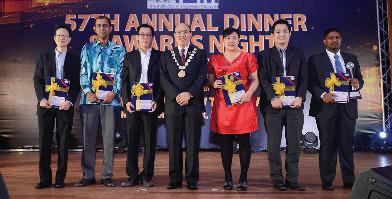

Graduate Membership for Organisation Category Universiti Teknologi Mara (UiTM)
Prof. Emeritus Dato’ Dr Hassan Said, Vice Chancellor And President
Corporate Membership for Individual Category Dr Ahmad Anuar Bin Othman
Corporate Membership for Organisation Category Jabatan Pengairan Dan Saliran Malaysia (JPS) And Tenaga Nasional Berhad (TNB) – A Tie
Dato’ Hj. Zulkefli Bin Hassan, Director General (Ketua Pengarah) of Jabatan Pengairan Dan Saliran Malaysia(JPS) & Y.Bhg. Datuk Engineer Baharin Bin Din Vice President, Distribution of Tenaga Nasional Berhad (TNB)
Most Active Organisation Universiti Teknologi Mara (UiTM)
Prof. Emeritus Dato’ Dr Hassan Said, Vice Chancellor And President
ORGANISATIONPERSON RECEIVED AWARDAWARD FOR:
Ekovest BerhadY.Bhg. Datuk Seri Lim Keng Cheng, Managing Director Wastewater Management
Gamuda BerhadY.Bhg. Dato’ Paul Ha, Deputy Group Managing Director Transportation
Pestech International Berhad
Sunway Integrated Properties Sdn. Bhd.
Mr. Paul Lim Pay Chuan, Executive Director/Chief Executive Officer Energy
Mr. Tan Wee Bee, Deputy Managing Director Property Development Taliworks Corporation Berhad Y.Bhg. Dato’ Ronnie Lim Yew Boon, Executive Director Water
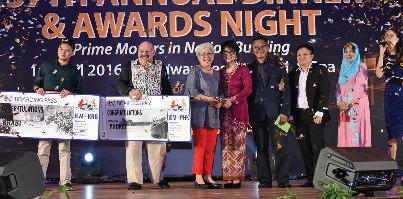
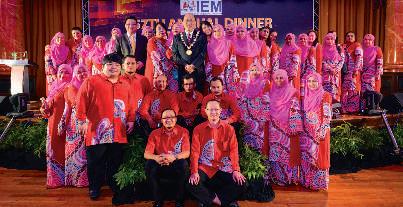
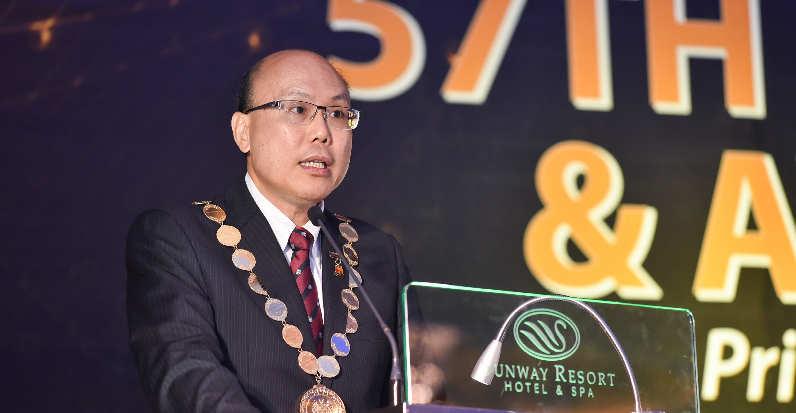
Ir. Tan Yean Chin is President of The Institution of Engineers, Malaysia (IEM) and board member of the Board of Engineers, Malaysia (BEM). He is also Secretary General of the Federation of Engineering Institutions of Asia and the Paciic (FEIAP), an inde”endent umbrella “rganisati“n f“r engineering instituti“ns in Asia and Paciic regi“n.
Ir. Tan obtained his Bachelor Degree in Civil Engineering with First Class Honours, from Universiti Technologi Malaysia (UTM) in 1992. Two years later, he obtained his Masters Degree in Geotechnical Engineering as well as won The Chin Fung Kee Prize f“r “utstanding academic ”erf“rmance fr“m Asian Institute of Technology (AIT), Bangkok.
A Professional Engineer and an Accredited Checker (Geotechnical) registered with the BEM, Ir. Tan is registered in ASEAN Chartered Professional Engineer (ACPE) as well as APEC and International Professional Engineers. He is an Honorary Fellow of the ASEAN Federation of Engineering Organisations (AFEO), Fellow of IEM and Fellow of ASEAN Academy of Engineering & Technology (AAET). In IEM, he had served in the f“ll“wing ”“siti“ns:
1. De”uty President (2014-2016)
2. Vice President (2005-2009, 2012-2014)
3. H“n“rary Treasurer (2009-2010)
4. C“uncil members (2002-2005, 2010-2012)
5. Chairman “f Finance C“mmittee (2014-2016)
6. Chairman “f P“siti“n Pa”er C“mmittee (2014-2016)
7. Chairman of Standing Committee on Professional Practice (2005-2007)
8. Chairman “f Standing C“mmittee “n C“r”“rate Affairs (2007-2009)
Respected Past Presidents, Immediate Past President, the newly elected Deputy President, Council Members and fellow engineers.
I am greatly honoured to present the Presidential Address at this Annual General Meeting, as according to our Institution’s traditions. The President has to present his vision and action plan for the beloved Institution, which is a challenging task because the topic selected must be close to my heart, has to be for the betterment of institution and of
9. Chairman of Geotechnical Engineering Technical Divisi“n (2004-2006)
10. Member “f Graduate and Student Secti“n (1995-1998)
Ir. Tan is a Senior Director in G&P Professionals Sdn. Bhd., a multi-disci”lines engineering c“nsulting irm. He has ”ublished m“re than 70 technical ”a”ers “n ge“technical engineering at local and overseas conferences and seminars.
Other ”“siti“ns :MALAYSIA:
• Board member, Board of Architects, Malaysia (BAM) (2008)
• Member “f the Ex”ert Panel t“ Review Malaysian C“nstructi“n Industry Practices, a””“inted by the Minister “f W“rks (2013-2014)
• ChairmanofCommitteeonProfessionalPracticeatBoard “f Engineers, Malaysia (BEM) (2009-2012, 2013-2016)
• Chairman “f the CIDB W“rking Gr“u” “n Tem”“rary W“rks in C“nstructi“n (2015-2016)
INTERNATIONAL:
• Secretary General of ASEAN Federation of Engineering Organisati“ns (AFEO) (2007-2009)
Ir. Tan is married to Madam Lian Poh Hoon and they have two sons.
interest to our members. After considerable thought, I have selected the topic, “Rejuvenation of the Institution for Long Term Sustainability”
Since its formation in 1959, IEM has grown to be one of the largest learned civil society organisations in Malaysia with about 34,000 members in all grades of membership. With this vast pool of engineering expertise, IEM can claim recognition

as the voice of engineers in the country which plays a pivotal role in promoting and upholding our professional status and image at national and international levels.
To plan and chart a course for IEM, we must first examine the growth of membership which is an important indicator of the sustainability of the Institution. The breakdown of IEM membership grades into Corporate and Non-Corporate over the last 12 years are shown in Chart 1 below.
According to IEM Constitution and Bylaws, Fellows and Members are Corporate Members of IEM who have the right to vote, requisite meetings and be elected to the Council, while Graduate and Student members are Non-Corporate Members who do not have these rights.
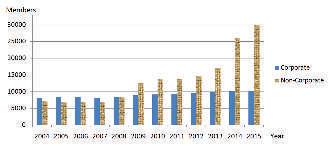
As shown in Chart 1, IEM membership has shown steady growth from approximately 15,000 in 2004 to about 40,000 in 2015. However, it shows clearly that the growth of NonCorporate Members has overtaken the growth of Corporate Members. The increase in Corporate Members in the last decade has been slow. In fact, in 2015, there was only an increase of less than 200, constituting about 1.1% of the total Corporate membership. On the other hand, the number of Non-Corporate members had increased by about 15% in 2015, or about 4,000 new members.
The total number of members increased by about 4,000 in 2015 alone, which indicates about 11% growth. However, as of 2015, there were more than 98,000 engineers registered with the Board of Engineers Malaysia (BEM) while we only registered some 40,000 members. So, we still have a big margin for improvement.
Chart 2 illustrates the membership in four major categories. The number of Student Members, which jumped by more than one-third in 2015 compared to 2014, is the main reason for the substantial increase in Non-Corporate Members. Despite being the largest group (based on numbers), the subscription fees paid by Student Members do not have a major direct and positive impact on the financial condition of IEM. However, it is vital to continue our efforts to recruit more Student Members and introduce them to IEM in their undergraduate years so that they will understand the roles and functions of the Institution better; this way, they will be more likely to join IEM after graduation.
In order to continue this healthy growth trend of Graduate Members, IEM has been taking proactive action such as bulk registration, to encourage Student Members to sign up as Graduate Members upon graduation. The
continuing of this effort is of utmost importance, and more needs to be done.
Despite the increase in the overall number of IEM members, there was a significant drop in the number of Graduate Members. It is hoped that this trend does not continue as these members contribute substantially to the IEM coffers. Moreover, Graduate Members will also be forming IEM’s future Corporate Members.

Membership data indicates that for IEM members who are engineers (excluding Student Member), the Member grade is still the largest group followed closely by Graduate. The ratio of Graduate Members to Corporate Members was 0.65:1.0 for the last 12 years. Despite a decline in 2015, the combined Graduate and Companion grade membership of more than 9,000, still constitute 23% of overall membership. Therefore, now is the right time to re-evaluate the role and responsibility of these two grades of memberships.
“Every living faith must have within itself the ”“wer “f rejuvenati“n if it is t“ live Mahatma Gandhi
In order to ensure a bright and prominent future for IEM, we need to strategise, plan and take the necessary steps and make changes to ensure its relevance and sustainability in the future. IEM has been successful in providing benefits to membersintheformoftechnicaltalks,shortcourses,seminars, conferences, site visits and other welfare and social events but the key challenge ahead is to remain relevant in an ever complex and changing world. In the early years (1960s to 1980s), most of the founding office bearers and members of IEM came mainly from traditional engineering disciplines such as Civil, Mechanical, Electrical and Chemical. They worked in traditional engineering sectors such as Government Service, Education, Construction, Power and Consultancy which played key roles in the building of a young nation.
Currently the Corporate Members of IEM are still mainly from these traditional engineering disciplines as these engineers are more likely to pursue Professional Engineer status due to the requirements of their career compared
with engineers from non-traditional engineering disciplines (such as electronics, computer, process, etc) who work mostly in factories, manufacturing, process, R&D, oil & gas, IT and other non-traditional engineering sectors which may not require Professional Engineer status for career advancement.
With impending changes and the development of more engineering disciplines, it is important that IEM evolves and stays relevant with the everchanging landscape of engineering. IEM cannot continue to rely solely on the few traditional engineering disciplines for membership. Understanding that there is a big pool of engineers working in non-traditional engineering sectors, IEM shall target them for membership and cater to their needs. The Companion grade of membership was created to cater to this group and we shall continue to encourage them to join IEM.
From the breakdown of different membership grades as shown in Chart 1, it is clear that Graduate Members are one of the largest compositions of IEM membership. However, based on current IEM Constitution and Bylaws, they are Non-Corporate grade and do not have the right to vote or to be elected to the Council. These Graduate Members are engineers who have graduated with engineering degrees recognised by the Engineering Accreditation Council (EAC) of Malaysia and are practicing engineers in their own field and discipline.
For long term sustainability, Graduate Members should be a main force behind the rejuvenation of the Institution. It will be a big mistake on our part to not recognise how important these Graduate Members are to IEM and our future. We should encourage them to be more active in IEM by giving them bigger and more important roles to play. Similarly, this change should also be applicable to the Companion grade members who are academically qualified and who have the necessary training, experience and exposure in the engineering profession. It is important to acknowledge that not all engineers wish or are able to be registered as Corporate Members because of their job function, experiences and different needs for career development. Not being able to fulfill the requirements set for the Professional Interview and to be granted Corporate Membership, does not make them any less an engineer than Corporate Members. The difference is that they may be practising in sectors that do not require them to develop skills and experiences as set down in the Professional Interview process. Therefore, if IEM still holds on to the outdated and regressive belief that only Corporate Members can play an important role in IEM, then the long term sustainability and survival of the Institution will be severely threatened.
The current Constitution and Bylaws should be amended to accommodate the Graduate and Companion grade Members by giving them the right to vote and to elect among themselves, representatives in the Council, Branch Committees, Standing Committees and Technical Divisions. Hopefully, with this change, we can convince them to volunteer and to help shape the institution and the profession at large. Most of these members belong to younger age group of below 40 years. With their participation in main committees of IEM, they will be able to rejuvenate and bring in new ideas that will help IEM to attract and cater to the younger generation of engineers.
Many members may wish that IEM will remain status quo but the truth is that we cannot afford to be complacent; it is false security to believe that the ways or methods which have worked in the past will work well in the future. If IEM does not change now, we will find that other organisations, either newly formed or already in existence, will attract young engineers and perhaps even our existing Graduate Members to join them by making them feel more needed, appreciated, important and giving them a better platform to perform. With awareness and acceptance of this threat, we will see that change is necessary for IEM.






As David Schlesinger said, “Change is hard. Change is hardest on those caught by surprise. Change is hardest on those who have difficulty changing too. But change is natural; change is not new; change is important”. This quote

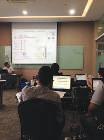


was also used by Thomas Friedman in his book, The World Is Flat, which also quoted “Even if you are on the right track, you will get run over if you just sit there”.
I truly believe that nothing is permanent except change. Therefore, let us embrace the changes necessary for the progress of our beloved Institution.
A declining interest in science, technology, engineering and mathematics (STEM) is detrimental to the development of a nation, especially a developing nation like Malaysia. In 2012, the Ministry of Higher Education, in its National Education Statistics of Higher Education Sector, reported that less than 40% of graduates in public universities in Malaysia pursued courses in STEM fields, compared with the targeted ratio of 60:40 of STEM:Non-STEM students which wassetbythegovernmentforlong-termsocio-economicgrowthofthecountry. Urgent and effective effort is needed to correct this lack of interest in STEM.
With fewer graduates in STEM fields, the number of engineering graduates will be adversely affected and in turn, this will reduce the number of potential IEM members in the future. IEM should play an active role to help the government promote STEM. The Kuala Lumpur Engineering and Science Fair (KLESF) programme (website http://www.klesf.net/klesf/index.jsp) is one of the few STEM promotion programmes in Malaysia, initiated to enhance the interest of school-age children and teenagers in science.
IEM is one of the initiators and part of the Steering Committee of KLESF. Others are the National Science Centre, Malaysian Industry-Government Group for High Technology (MIGHT), ASEAN Academy of Engineering and Technology (AAET) and Universiti Tunku Abdul Rahman (UTAR). KLESF is also one of the key programmes under the Science To Action (S2A) initiative launched by the Prime Minister in 2013.
The programme comprises a series of activities to promote the importance of science, technology and innovation (STI), to allow students to interact with engineering and science professionals, to complement the existing school STEM curriculum with more hands-on learning components, to aid the outreaching of STEM to suburban and rural communities and to enhance science literacy among the general public. IEM’s many branches in the country can play a more active role in KLESF to promote STEM to both primary and secondary school students. For proper continuity of the STEM effort by IEM, a Standing Committee headed by a Vice President will be identified to take charge.
To rejuvenate IEM, the full support of the volunteers and members as well as the Council and the Executive Committee, is needed to embrace the changes. The IEM Constitution and Bylaws should be amended to accommodate Graduate and Companion members, to enable them to play a bigger role in the policymaking and operations of IEM to ensure sustainability of the Institution. We have to work hard to attract and recruit new members and, at the same time, retain current members.
Recognising the deterioration of interest in STEM among primary and secondary students, IEM and its many branches will put in extra effort to promote STEM in the country.
In closing, I wish to thank all of you for the trust you have placed in me and the incoming Council. We will work hard to make IEM an institution that represents all engineers in Malaysia.
Y“u can acc“m”lish anything in life, ”r“vided that y“u d“ n“t mind wh“ gets the credit.
Harry S. Truman


Tan Lin Choo, graduated from
University, Australia
in Civil Engineering

a
T“ date, many Malaysian c“nstructi“n c“m”anies have been certiied ISO 9001. Yet, many ind themselves struggling t“ c“m”ly with ISO 9001 requirements due to lack of proper documentation and inconsistent quality “f w“rkmanshi”. This can be critical ”r“blem when clients require Quality Assessment System In C“nstructi“n (QLASSIC) certiicati“n f“r their projects.
The common issues that construction companies face are:
• Work proceeds at site without Consultant’s approval. For example, Request for Work Inspection is not issued and Inspection Checklist is not utilised for workmanship verification.
Mr. Akira Yabe, graduated from Waseda University, Japan with a Bachelor in Science and Engineering in 1979. He is currently the Director of Total Quality Management (Centre of Excellence) and Southern Region Projects Management in Sunway Construction Group of Companies.

Mr Mohd Faudzi bin Hanaiah, obtained his Bachelor of Science degree in Civil Engineering from The Ohio State University, United States of America in 1987. He is currently the General Manager of Total Quality Management - Quality Assurance. His responsibilities include coordinating, establishing and maintaining good practices related to quality matters at Sunway Construction Group of Companies.

Mr Azmi Mamat, graduated from Case Western Reserve University, Ohio, USA with a Bachelor in Mechanical Engineering in 1991. He is currently the Senior Manager of Total Quality Management - Quality Assurance in Sunway Construction Group of Companies.
• Lack of in-process quality inspection during installation to detect sub-standard workmanship. Early detection is very important to enable the project to undertake corrective actions in a timely manner in order to minimise defects and reduce rectification work.
• Installation using unapproved materials is sometimes not detected until too late. The use of wrong materials in construction compromises quality standards. As it will be costly to dismantle work that has been completed, it is therefore important to carry out regular inspections on materials to ensure that only the correct and approved materials are used as per project specifications.
• Rectification of defects is not carried out in a timely manner. When defects are accumulate towards the end of project, extensive rectification works may lead to late handover.
• Lack of discipline to comply with ISO 9001 requirements on daily basis. As a result of this, many companies have had to spend additional time to prepare for ISO 9001 audits annually, especially on documentations such as Drawing Controls, Inspection and Test Records, etc.
• Lack of attention on quality-related infrastructure. Defects caused by damaged materials due to poor handling and storage, failed cube test due to poor preparation of sample cubes, or untraceable approved samples due to non-designated area for sample display.
The Sunway Construction Group of Companies (SunCon) recognises the above challenges and has introduced a system called Sunway Quality Merit System (SQMS) to address these issues. The SQMS systematically assesses projects on a regular basis to ensure that all our construction activities comply with ISO 9001 standards and inspections are carried out as per Approved Inspection and Test Plan. This ensures consistent good workmanship as per QLASSIC requirements.
Sunway Quality Merit System (SQMS) was first introduced in SunCon in the first quarter of 2014 to measure project quality performance in terms of system and product quality at every stage of construction. The assessment is based on the QLASSIC requirements for the measurement of Product Workmanship and ISO 9001 standards to measure the effectiveness of Inspection and Test, and Document/Record Management practices.
The quality performance of all SunCon projects are benchmarked using SQMS scores. Due recognition is given to projects with high SQMS scores and their good practices are shared company-wide. Meanwhile, gaps in projects with low SQMS scores are identified for immediate improvement action. This is a continuous improvement process of measuring and adopting effective practices in alignment with organisation’s objective to achieve the highest standard of quality and excellence. The objectives of SQMS are:
• To benchmark all projects in SunCon
• To measure project quality performance systematically and objectively
• To standardise good practices across all projects in SunCon
• To create better awareness of product quality as per QLASSIC requirements among all staff and subcontractors
• To achieve a minimum 75% QLASSIC score for all SunCon projects
SQMS assessment is conducted on a monthly basis in all SunCon projects, ranging from high-rise to landed building projects, civil projects such as Bus Rapid Transit (BRT), Light Rail Transit (LRT) and Mass Rapid Transit (MRT) and geotechnical projects, covering all trades including piling, reinforced concrete, precast installation, steel structure, brickwork, plastering to painting, etc.
ASSESSMENT CATEGORIES
The SQMS score of a project is determined based on compliance with the following 5 main assessment categories:
A. Product Workmanship
The assessment methodology on product workmanship is conducted based on QLASSIC standards, using proper QLASSIC tools such as 1.2m spirit level, L-angle, tapping rod, steel gauge and measuring tape.
New assessment criteria have been established for trades not covered under QLASSIC standards such as brickwork, blockwork, premix, piling work, soil compaction, etc.
The assessors will also check whether the right materials are being used as per approval or specifications.

B. Inspection and Test
This criteria is used to measure whether a project’s in-process inspection and test have been carried out accordingly at each stage of construction as per the approved Inspection and Test Plan.
Evidence of inspection and tests conducted is verified via the relevant Request For Work Inspection (RIN) and Inspection Checklists which must be duly signed by representatives of the Client and Consultants.
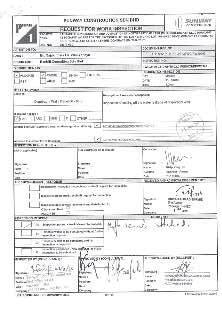
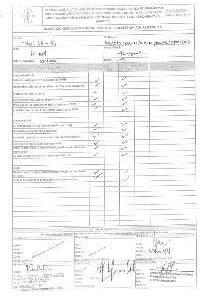
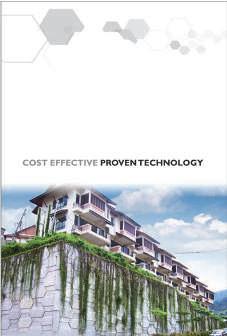

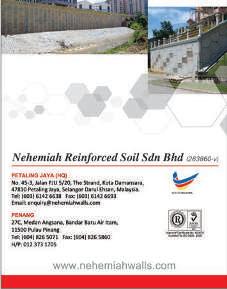
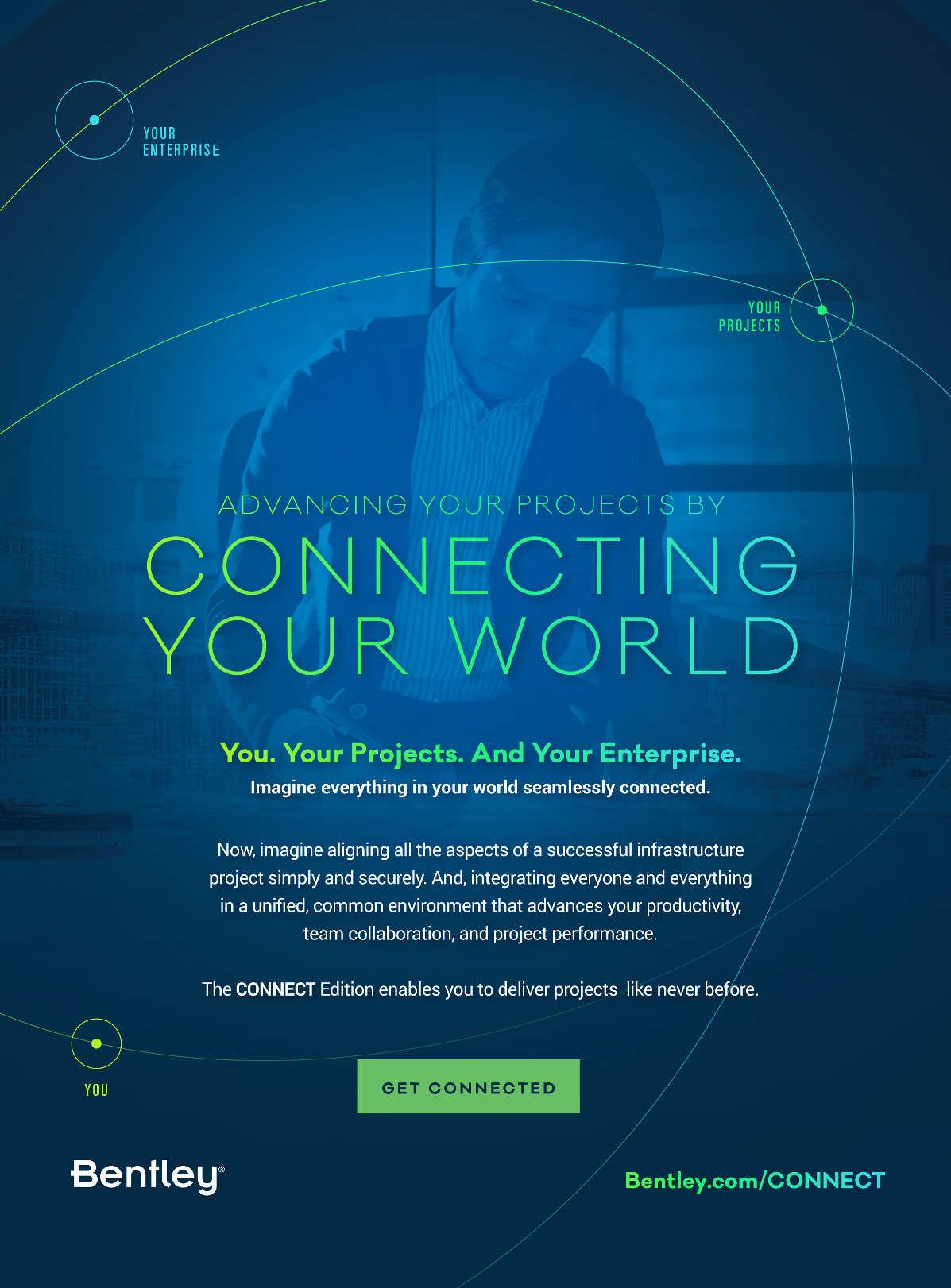
C. Response to Client’s Complaints
At SunCon, all complaints must be responded to in a timely manner. This measures the Project Team’s response time to complaints received. The score is based on the percentage of Non-Conformance Report (NCR) closed at the time of assessment.
D. Quality Infrastructure
The setting-up and maintenance of quality-related infrastructures such as sample display area, cube collection area and material storage area to support in achieving good product quality are assessed in this criteria.
D.1 Designated Sample Display Area
Projects must provide a designated area for Sample Display where samples are segregated by trades, neatly arranged and labelled with approval status for easy reference and retrieval.

D.2 Cube Collection Area
A designated area for cube/mould storage and curing tank with clear signages and good housekeeping must be provided to facilitate the preparation and curing of concrete cube samples to minimise cube strength failure.

D.3 Material Storage
Designated storage areas must be sufficiently protected to prevent damage to the materials, as the quality of final product will be affected if damaged materials are used for installation.


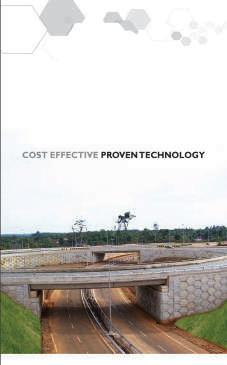


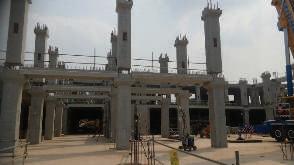
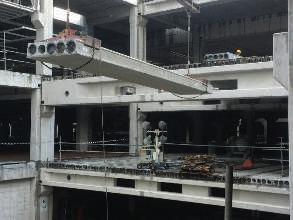
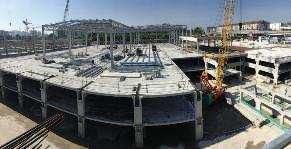
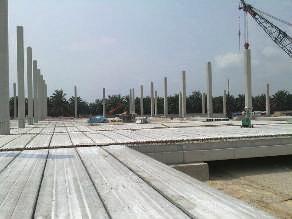
28, Jalan 7/108C,Taman Sungai Besi, 57100 Kuala Lumpur.
Tel: +603-7980 2728
Fax: +603-7980 5662 www.epmsb.com.my
E. Document and Record Management
Documents and records must be systematically processed and stored as per ISO 9001 standards. This criteria evaluates adherence to document management procedures. Incoming documents are required to be dated and stamped with relevant controlled copy, registered and uploaded for dissemination to all staff electronically via SunCon Electronic Document Management System (eDMS).
Outgoing documents with acknowledgement copies will follow a similar procedure. All hardcopies and attachments are to be filed according to SunCon Project Filing Index (PFI) with standardised labels in a hanger or rack with signage to ensure traceability.
This also involves the checking of documents and records in both softcopy and hardcopy formats. The records in eDMS are checked against the hardcopy of Incoming and Outgoing Correspondences, Approved Construction and Shop Drawings, Site Memo, Request for Information (RFI), Request for Inspection (RIN) and Inspection Checklist, Safe Work Method Statement (SWMS), Technical Material Submission (TMS) and Minutes of Meetings to ensure there are no missing documents.
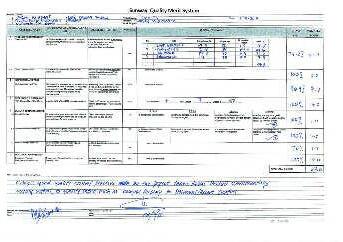
Weightages for each SQMS assessment categories
Each of the 5 categories listed above is weighted according to its impact on overall workmanship quality, with Product Workmanship carrying the highest weightage (60%) of the overall SQMS score.
SQMS assessment is carried out on every SunCon project on a monthly basis by a team of SQMS assessors. Project score and findings are reported at the closing meeting for immediate action by the Project Team. A formal report is submitted to SunCon Management at the end of the assessment day.
We have formed a dedicated team of full-time assessors as we recognise the importance for the SQMS assessment to be conducted independently and in a consistent manner. The team’s findings must be objective, fair and acceptable by all Project Teams. The assessors must have a vast knowledge of QLASSIC requirements and ISO 9001 standards with related
hands-on experience. They are are also certified CIDB (Construction Industry Development Board) QLASSIC assessors. Our SQMS team consists of 4 members and are responsible for the following:
• Schedule monthly assessments
• Conduct assessments as per schedule
• Report findings
• Analyse scores and findings on a monthly and quarterly basis
• Review SQMS criteria for continuous improvement on a quarterly basis.
All projects are assessed on a monthly basis to ensure that project quality is maintained at all times. The monthly SQMS assessment dates are scheduled every quarter and sent out to the Project Teams accordingly. Confirmation is sent a week prior to the scheduled assessment date.
SQMS assessment is conducted at the project site to measure the product workmanship and at the site office to check the documentation and records management.
At the opening meeting, the Project Team briefs the SQMS Team on their work progress since the last assessment. Trades and locations are predetermined before the site walk to ensure impartiality of the sample selection.
Project Team representatives, relevant trade masters and subcontractors are required to join the assessment site walk. QLASSIC tools such as 1.2m spirit level, L-angle, tapping rod, steel gauge and measuring tape are used and the findings are recorded in the Trade Assessment Checklist. The type or brand of materials used for installation, conditions of materials storage area and other quality-related infrastructures are captured and recorded throughout the assessment.
Upon completion of product workmanship assessment at site, the documentation of Inspection and Test records of the trades at the location being assessed and approval record of the materials captured at site, are checked accordingly at the site office.
The overall project documents including incoming and outgoing correspondences, approved construction drawings and shop drawings, site memos, etc are checked for adherence to the documents and records management system.
A. Closing Meeting with Project Team
The project score and findings are reported at the closing meeting, which is attended by the Project Team comprising the Project Manager, Project Engineers, respective trade masters and subcontractors.
The SQMS Team’s role is to highlight its findings with photographs of the observations made during the assessment. Areas for improvement are discussed for corrective action to be taken accordingly. The Project Manager is required to acknowledge the score and findings by signing the SQMS Report.
B. Project SQMS Report
At the end of the assessment day, the SQMS Team prepares an official report to formalise the project score and findings. This will be submitted to SunCon Management and circulated company wide via email for sharing purposes.
C. SQMS Monthly Report
At the end of each month, the SQMS Team analyses the project scores and findings to identify the following:
• Project Ranking from the Highest to the Lowest scorer
• Most Improved Project for the month
• Most Declined Project for the month
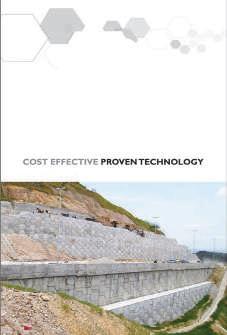
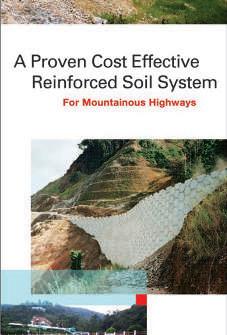
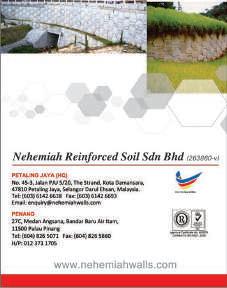
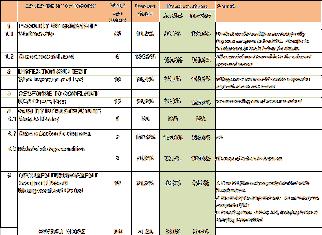

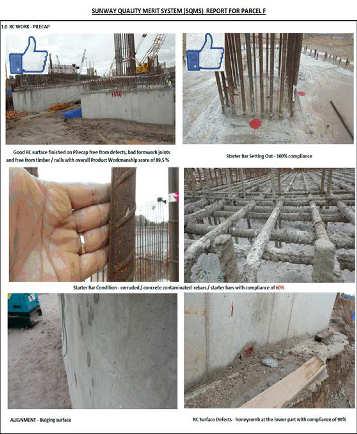
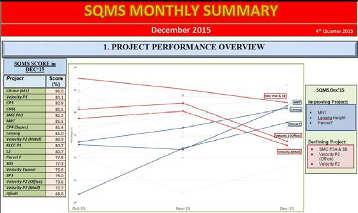

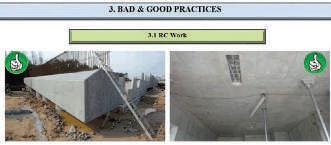


• Analysis of Trade Scores by Projects • Analysis of Best and Worst Performing Subcontractors • Good and Bad Practices Observed during the month The Project Manager of the project with the lowest SQMS score is required to present his immediate action plan for improvement at the Monthly Management Meeting.
D. SQMS Quarterly Report
Every quarterly, the SQMS Team prepares a 3-month statistical data analysis report so that the SunCon TQM-COE Head of Department and Special Project Director can review the overall performance of project. This report presents the performance in the current quarter and will be compared against those of previous quarters. Critical areas that require improvement and root causes are identified to close the gap between the top and bottom performers.
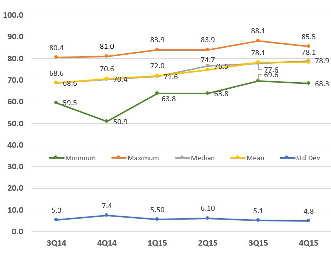
analysis of Overall SQMS Score for project performance monitoring
The effectiveness of SQMS is reviewed on a quarterly basis and where necessary, to fine-tune the criteria and/ or methodology for continued improvement. To-date, the SQMS has been improved and revised for the 7th time.
So far, SQMS has proved to be effective in improving the overall project quality and product workmanship in SunCon projects as shown in the diagram below.
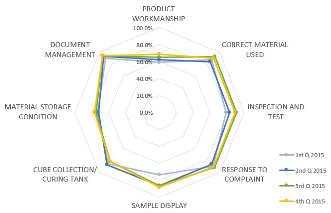
The project with the highest SQMS score for the quarter will be declared the “SQMS Quarterly Winner”. The award is given to the winning project in recognition of its good and consistent project quality performance as well as to motivate other projects to improve their performances. This creates a healthy, competitive environment among the Project Teams and inevitably, dynamic cross-project learning takes place continuously to adopt good quality practices and avoid poor/bad practices.
The award consisting of a trophy and prize money is presented to the winning Project Team during an official award ceremony held at the winning project site.
This ceremony is attended by the SunCon Management and Project Managers to celebrate the achievement of the winning project, together with their subcontractors and workers.
This is followed by a Cross Learning Program (CLP) site walk which provides a good opportunity for project managers (or their representatives) from other projects to learn from the winning project. This is part of the continuous learning process and knowledge sharing of good practices within the SunCon Group of Companies.
Sunway Construction Group of companies (SunCon) has diversified projects such as building, civil and geotechnical. The initial challenge was for the SQMS Team to standardise quality measurement criteria to be applicable to this wide range of project types.
The product workmanship category in SQMS is based on QLASSIC standards which covers finishing trades such as plastering, painting and tiling. However, due to the vast nature of our construction works, we also faced the uphill task of formulating a set of product workmanship criteria to assess trades not covered by QLASSIC standards, such as brickwork, blockwork, premix, piling work, soil compaction, etc.
Many brainstorming sessions were held with the Heads of Operations to derive a mutually agreed quality measurement criteria and weightage to cover the various trades in this wide range of project types.
The full acceptance of these criteria is critical to get the necessary buy-in by all relevant parties.
To date, Sunway Construction has implemented SQMS for more than two years. The full support by the SunCon Management enables us to inculcate the importance of product quality to Project Team members and subcontractors by increasing their awareness in the overall quality requirements and QLASSIC standards.
The benefits of SQMS are as listed below:
• Improves quality of product workmanship, from structural to architectural finishing works
• Creates an in-process inspection culture by Project Team members to identify and rectify defects immediately as work progresses











• Improves daily documentation which leads to good document and record management in compliance to ISO 9001 and our Quality, Environmental, Safety and Health (QESH) Management System
• Reduces the number of Non-Conformance Report (NCR) from Client and/or Consultants as workmanship quality and document management improve
• To date, the SunCon average QLASSIC score is 76%, which is above the national average of 70%
The marked improvement in the overall quality is shown in the figure below.





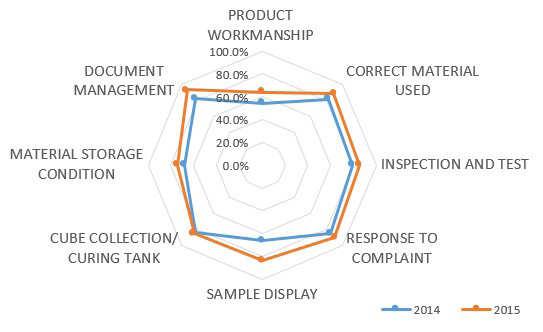
Following the success of SQMS implementation, we extended the assessment initiatives to our subsidiary specialising in Mechanical, Electrical and Plumbing (MEP) works, from the second quarter of 2015.


With the incorporation of MEP works in SQMS, SunCon now has a complete set of project quality measurement for all trades, applicable to building, civil and geotechnical projects.





To further engage subcontractors in this initiative, SunCon implemented the “Best Subcontractor SQMS Quality Award”, starting in the first quarter of 2016. This is to give due recognition to our subcontractors for their continuing efforts to play a pivotal role in improving project quality and to create a healthy competition environment among subcontractors to improve the quality of their respective trades.


Title: IEM Mechanical & Electrical Forum (Full Flex) (Kuala Lumpur Convention Centre)
23 - 25 May 2016
Organised by : The Institution of Engineers, Malaysia Time : 10.00 a.m. – 5.30 p.m. CPD/PDP : Applying
Title: IEM Mechanical & Electrical Forum (Per Stream - Stream 1) (Kuala Lumpur Convention Centre)
23 - 25 May 2016


Organised by : The Institution of Engineers, Malaysia Time : 10.00 a.m. – 5.30 p.m. CPD/PDP : Applying
Title: IEM Mechanical & Electrical Forum (Per Stream - Stream 2) (Kuala Lumpur Convention Centre)
23 - 25 May 2016
Organised by : The Institution of Engineers, Malaysia Time : 10.00 a.m. – 5.30 p.m. CPD/PDP : Applying
Kindly note that the scheduled events below are subject to change. Please visit the IEM website at www.myiem.org.my for

By Zoe Phoon
IEM shows its appreciation to its sole surviving co-founder, the 96 years young Ir. Dalip Singh, whose life and times have inspired many an engineer to push the envelope.
It was both a pleasure and a pleasant surprise to meet up with Ir. Dalip Singh s/o Bahadur Singh in person. It was a pleasure because he is the only surviving co-founder of the Institution of Engineers, Malaysia (IEM) that was set up in 1959, nearly six decades ago. If its members were highly regarded even then, they are more so around the world today.
It was also a pleasant surprise because Ir. Dalip was in high spirits despite having suffered three broken ribs the day before the interview in February at his high rise residence in Bangsar, Kuala Lumpur. He appeared none the worse, not even a grimace on his face, as he sat upright, ready to begin the Q&A session. He even cracked golfing jokes, loud and clear, despite the medical condition.
“I tried to hold on to a railing to steady myself, not realising it was wobbly. So I fell,” he said, recalling the incident that happened on an outing to the commercial section of Bangsar. “The doctor told me I had broken three ribs.”
After the interview, he walked cautiously to the centre of the living area for a group photo session with some of his family members, three IEM officers who were paying him a courtesy call, and me.
Imagine how interesting it was to chat with a 96-year-young and long retired, very dedicated mechanical engineer, about how things were back then, when our nation was Malaya and before we gained independence from British rule in 1957.
Ir. Dalip’s father came to Malaya from India and started bullock carting and cattle rearing enterprises. In fact, it was the Sikhs who pioneered the bullock carting industry here in the 1900s. Ir. Dalip was born here in 1919, a year he describes as an “auspicious figure”.
He had primary to secondary education at the Anglo Chinese School in Ipoh, Perak. In 1935, he passed the Senior Cambridge Examination with First Grade, with exemptions in London Matric.
He recalled that it was “the big depression” at that time and jobs were hard to come by. Teachers in private schools were paid $11 a month while clerks in government service started at $26 a month. After Ir. Dalip left school in 1935, he worked at various odd jobs and was even a watchman once. He also had his own bullock carting business which he operated successfully until June 1936.
He was selected for a clerical post in the Perak State Clerical Service but he declined and joined the Central Railway Workshop in Sentul, Kuala Lumpur, as an apprentice
in July with a daily wage of 72 cents. “I got the technical job but my selection was overruled and I was replaced by another candidate,” he said.
At around that time, he joined the Gurdwara Central Workshops as a member and participated in all its activities, never missing the Sunday “diwan” and other “jorr mela”.
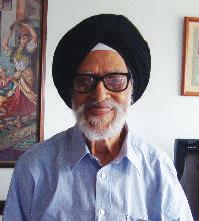
In 1937, he applied to the Railway Department for the post of technical apprentice. He was the only one selected for mechanical engineering from the large number of applicants. He later attended the Technical School as it was the only institution for all branches of engineering in Malaya then. He graduated with an upper class diploma in mechanical engineering and was promoted to technical assistant.
In January 1942, the Japanese Imperial Army occupied KL, so Ir. Dalip did not report for the technical assistant post. Instead, he and some colleagues helped Indian soldiers and prisoners of war collect medicines and food. Together with a few friends, he also set up a wheat-grinding mill to make atta flour for the soldiers in the compound of the Methodist Boys School near the railway quarters in Jalan Sentul.
That same year, he and a few friends from Sentul joined the First Formation of the Indian National Army (INA) as a cadet officer and was given proper military training. He later left the camp “when General Mohan Singh, who had organised the INA, did not agree with the plans of the Japanese and so was put under house arrest”.
He returned to his pre-war post, this time as technical assistant to a Japanese engineer at the Sentul Railway Workshop. He built a good relationship with the engineer by doing all the calculations of the axles and springs on the wagons brought over from Java, Indonesia, “to the satisfaction” of the engineer. He encountered another stroke of “good luck” as the Japanese engineer was a rugby player and both of them played on the same team.
In 1943, he married Charanjit Kaur in Kuala Kangsar, Perak. The couple has five children who are now an economist, an arts graduate in English, a scientist, a doctor and a lawyer.
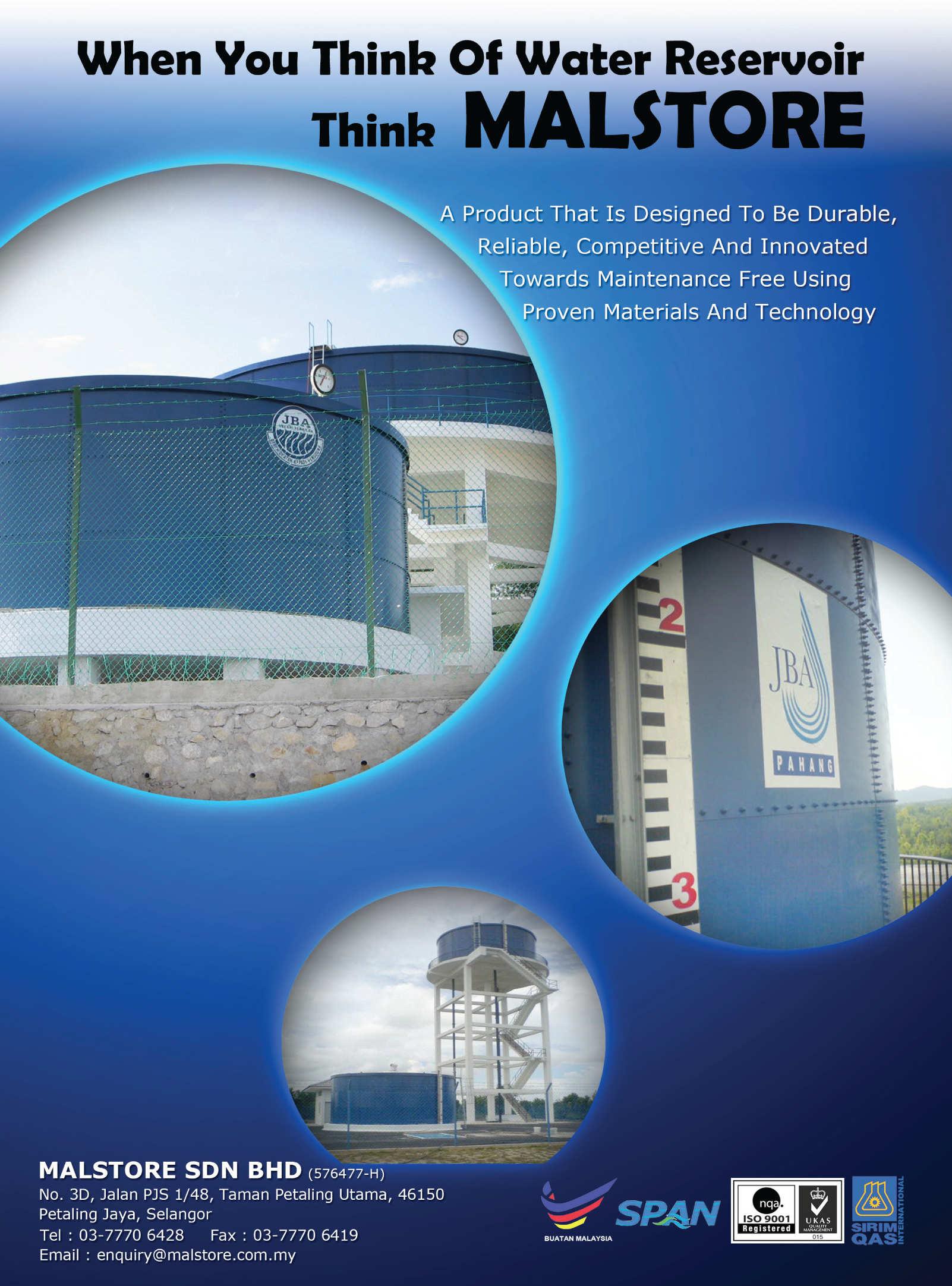
In early 1945, he was arrested by the Japanese Kempeitai (military police force) along with four other Railway colleagues and two from the Telecom workshop. They were accused of being “British spies” and were interrogated and tortured with beatings and water treatment.
“After the interrogations were completed, we were sent to the detention ward in Pudu Prison but we were later acquitted and discharged in June that year,” he said. The Japanese surrendered a few months later that same year.
Ir. Dalip returned to his technical assistant job. Between 1947 and 1948, the government Malayanised senior positions in various departments and started training officers, engineers, surveyors and so forth to take over posts held by expatriate officers who were mostly British. As there were no suitable facilities in Malaya then for such training, especially in engineering, most of the locals had to be sent to the United Kingdom.
For the first batch, Ir. Dalip said the Railway Department handpicked two officers, one each for civil engineering and mechanical engineering. It was only in the second batch that applications were invited and a properly constituted board assembled to select suitable candidates. Fifteen applicants were shortlisted for mechanical engineering, including Ir. Dalip. Later, a Malay candidate was also picked, making two for mechanical engineering. They had to pass part 1 of the examination before they were sent overseas. Both were seconded full time from 1950 to the Technical College (now Universiti Teknologi Malaysia) which provided the facilities. They sat for the part 1 exam in 1951 and passed.
In 1952, Ir. Dalip left for England where he did practical training at British Railways and passed the part 2 and part

3 exams. He returned to Malaya in 1954 and was posted to Sentul Works as works assistant. He gradually rose from this position to district locomotive assistant, and to district locomotive superintendent (DLS) in charge of all locomotive depots in the country.
When he was the DLS in Gemas, Negri Sembilan, there was an association of engineers when Mr. J. Sharples was chairman of the National Electricity Board or NEB (Tenaga Nasional Bhd was formed in 1990 to succeed NEB). Mr. Sharples invited him to join the association as a member.
“One of the NEB association’s rules was that you couldn’t qualify for a superscale appointment if you are not a member of either an institution of mechanical/civil/electrical engineers in UK,” said Ir. Dalip. That spurred him and a few friends including Raja Zainal Raja Suleiman and Mr. Lau Foo San, to set up a similar institution for engineers in Malaya.
“However, to be a member of this local organisation which we planned to form, you needn’t be a member of any of the institutions of engineers in UK,” he said.
Later, Ir. Dalip was made production engineer and in 1958, he was promoted to works manager of Sentul Works which had 2,000 employees and a budget of about RM20 million. He was the first local to take charge of the large sophisticated engineering workshops, the only one in the country at that time.
In 1962, he was promoted to chief mechanical engineer, overseeing a workforce of 5,000 and an annual budget of RM40 million. He served in this position until 1971.
In 1962, the Railway Workers’ went on its biggest strike and a train was derailed north of the Johor Baru Railway Station. The driver of the breakdown crane was on strike and




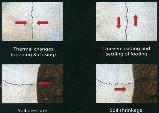















that made clearing the track almost impossible. So Ir. Dalip rolled up his sleeves and personally operated the 40-ton steam crane, a task he had never done before. He managed to clear the track. This was something that no other head of department would have undertaken.
In 1971, he was promoted to deputy general manager (engineering and operations) as the number 2 man to the general manager. He retired in April 1974. He recalled an incident that happened when he was about to retire. Someone was asked to “get him for a job” in a neighbouring country but Ir. Dalip’s reply was: “I have served for so long. Now I want to serve my family.”
He said he refused the job despite being offered “dangling carrots” such as a house in an upmarket location and a lot of other perks. “I just refused. That was the biggest thing I’d ever done in my working life. I didn’t comply with the organisation’s request because I felt that it would have given me a bad name,” he said.
Outside of work, Ir. Dalip said he was glad that his connection with the Gurdwara Central Workshops, now known as the Sikh Temple Sentul, spanned more than 60 years. He also spoke of his love for golf. He said: “It’s a wonderful game. You make a lot of friends and it’s a great opportunity to crack jokes. My sons are good golfers too as they started young. I was involved in the ninehole golf course on the Sentul site, now occupied by Kuala Lumpur Performing Arts Centre (KLPaC).” He also spends a lot of time reading, especially books on history.
Outside of Sentul Works, he was asked to teach final-year mechanical engineering students at University of Malaya. He was paid $30 an hour then.
“The way I wanted to teach, I had to prepare well for the lectures. That required me to read seven to eight books for one subject alone. I also set questions for the examinations and I refused to lower the standards,” he said. “All papers set as well as the answer papers marked by me were scrutinised very closely by an external examiner from UK.”
Ir. Dalip shared some snippets of life when Malaysia was Malaya, a time when Malayan workers could turn blue in the face in their attempts to tell their expatriate bosses that they were right based on meticulous calculations and all. Yet, the bosses refused to accept the facts. He too encountered all that but luckily, those even higher up finally acknowledged his thorough, meticulous work. He said: “That saved my career”.
So it would seem that Ir. Dalip, like pioneers in most endeavours, had “done it all”. He described his work life as “interesting” at a time when “Mat Salleh expats were in control”.
We are a supplier of high quality geosynthetic products used for soft soil stabilization, slope reinforcement, coastal erosion protection, river bank protection, landfills, drainage, road and railway construction.
Our Products:
NEXTILE NON-WOVENS
NEXFORCE HIGH-STRENGTH WOVENS
NEXGRID GEOGRIDS
We also provide design, specification, bill of quantities, cost estimate and drawings free-of-charge.








Get in touch with us: Tel: 03-6142 6638 (Ext. 215) Fax: 03-6142 6693 sales@neusynthetics com
Sales Team: Izwan (012-568 5611) Gordon (012-355 0872)

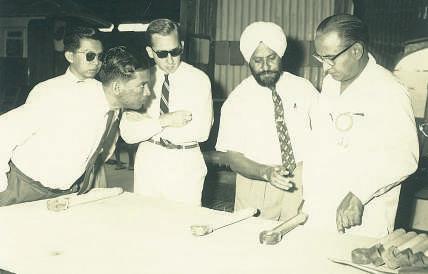
Showing UN Economic Commission for Asia and the Far East (ECAFE) members the new methods of metal spraying in Sentul Railway Workshops to build up worn out piston rods
He relates this incident: “We bought steam locomotives of high horsepower butthesegaveusalotoftrouble,onebyone.Iwroteletterstothemanufacturer with regards the problems but the British expat in charge didn’t send my letters out. The troubles continued and we were suffering. I investigated the problems and finally, managed to convince him that the locomotives were not compatible with the work we were doing before he finally sent the letters out.”
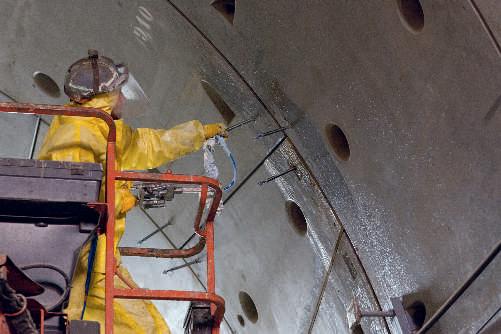
He also recalled how, at a conference in the UK in 1962, he proved to the people concerned that the locomotives were problematic but they wouldn’t accept any of it. “I ended up telling them ‘the locomotives are yours, but the problems are mine!’. It was only later that they accepted what we’d proved and reimbursed us £1,000 per locomotive and £1,500 per locomotive for the modifications. We were confident we could do it. That was a big feather in my cap,” he said with pride.
But despite all this, he said, many local engineers in Malaya and their expat counterparts became good friends.
Here are glimpses into the state of engineering in the country in the early years and how far it has since advanced. IEM was formed in 1959 and the inaugural dinner was held in Selangor Club in Kuala Lumpur with the first Prime Minister, Tunku Abdul Rahman Putra Al Haj, as guest of honour.
In his speech, Tunku said that “wherever you look, large new buildings loom before you. New roads, canals and bridges spring into being; everywhere engineering skills are displayed with a high standard of work”.
HealsospokeofbeingtheguestofhonourataprivateluncheoninLondon, hosted by the three combined Institutions of Civil, Mechanical and Electrical Engineers. “They invited me to this luncheon because each of the institutions tookadeepinterestinwhatMalayawasdoingandbuildingandinthegeneral trend of development projects, particularly on the technical side,” said Tunku.
Back home, giving yet another glimpse into the then newly formed IEM, the Prime Minister related how “we have now built a small house at the end of a new road which we surveyed and constructed ourselves. The house is not big but at least we have our own and the standard of construction is by no means low. In other words, we now have a national institution, the entry qualification to which is no lower than the standard accepted in this country at the present time. The membership stands at 60”.

Members of the first IEM council were Tuan Hj. Yusoff Ibrahim (President), Raja Zainal Raja Suleiman (Vice President), Lau Foo San (Honorary Secretary) and Aw Yang Hong Chiew (Honorary Treasurer). Ir. Dalip, who represented the mechanical engineers, was one of the council members. Others included Chew Kam Pok, Chew Kit Lin, Chin Fung Kee and Tong Kay Chor.
Today, according to IEM President Dato’ Ir. Lim Chow Hock, the Institution, which has been holding the fort for Malaysian engineers for more than half a century, has made a name for its 40,208 members not just within Southeast Asia but also around the world. As always, IEM strives to ensure that
the education, training and qualifying standard for professional engineers are on par with the world’s best.
As the saying goes, a journey of a thousand miles begins with a single step. For IEM, that single step began around the timethatMalayagainedindependencefromtheBritishin1957. Its co-founders, including Ir. Dalip, came up with the idea to establish an institution for engineers to promote and advance the science and profession of engineering in all of its disciplines in the country, similar to what the engineers had done in the UK. The rest, as they say, is IEM’s history – and Dalip’s history – still being written.
Error on FEATURE – IEM Employment Survey 2014 Report published on page 18 to page 24 in JURUTERA March 2016 issue.
We wish to attach the corrected Figure 6 and the missing captions from Figure 7 to Figure 22.
Figure 6: Current Employment Sector
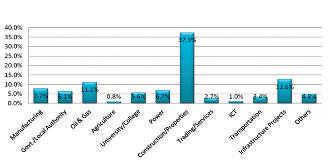
Figure 7: Total response = 99.5%
Figure 8: Reasons of Choosing Engineering
Figure 9: Annual Remuneration for Year 2002, 2004, 2007, 2008 and 2014
Figure 10: Annual Remuneration to Years of Experience by Gender for Working Engineers/Corporate Members
Figure 11: Annual Remuneration to Years of Experience by Qualification for Working Engineers/Corporate Members
Figure 12: Annual Remuneration to Years of Experience by Qualification for Graduate Engineers
Figure 13: Annual Remuneration to Years of Experience by Employment Status for Working Engineers/Corporate Members
Figure 14: Annual Remuneration to Years of Experience by Employment Status for Graduate Engineers
Figure 15: Annual Remuneration to Years of Experience by Location of Employment for Working Engineers/Corporate Members
Figure 16: Annual Remuneration to Years of Experience by Location of Employment Graduate Engineers
Figure 17: Response to Progression Rate of Career
Figure 19: Response to Universities Programme
Figure 20: Green Building Involvement/Contribution and Awareness
Figure 21: Achievement of the Purposed Green Technology
Figure 22: Green Building Technology
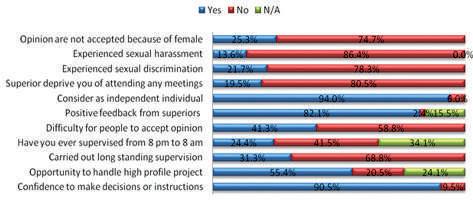
Figure 18: Discrimination to Woman Engineers The error is much regretted.
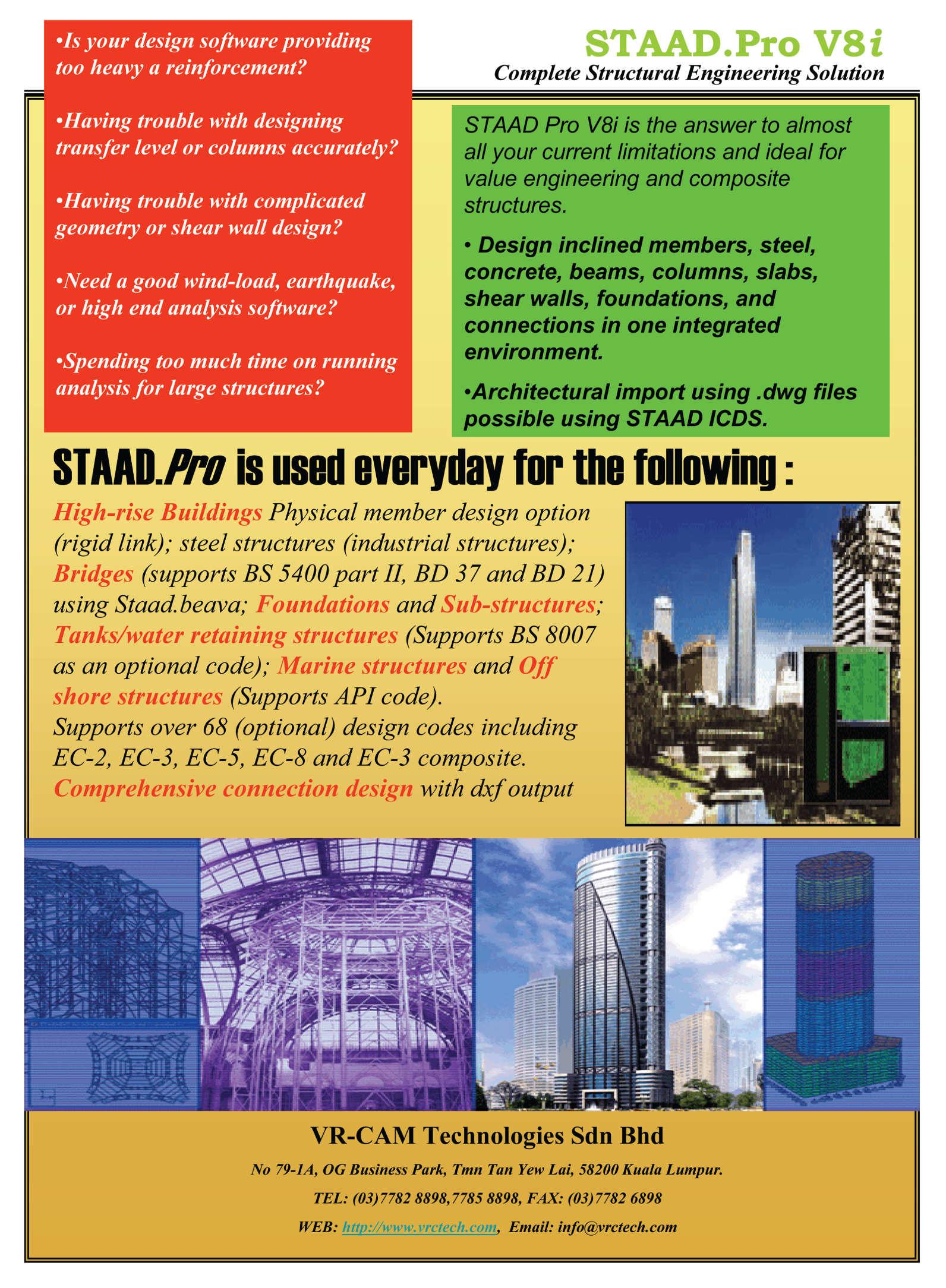
BY MECHANICAL ENGINEERING TECHNICAL DIVISION
IEM is collaborating with United Business Media Sdn. Bhd. (UBM) to organise forums during the three-day ASEAN Mechanical & Electrical (M&E) Expo. Regarded as akeyhighlightoftheevent,thedaily forums will cover current topics of interest to engineers. According to Ir. Dr Cheong Thiam Fook, from IEM’s Mechanical Engineering Technical Division, the forum offers excellent opportunities for engineers and other professionals to start talking about technological developments and innovations in the industry.
“They may not see these developments yet but through the forum, we are creating a platform for them to challenge their thought process. We also want to challenge and expose the engineers to the various opportunities that will be here in a short time due to the rapid development in technology,” he says.
More than 20 local and international experts will present and discuss the best practices in the power and electrical sector, green technology, renewable energy and HVACR,particularlythecontinuation of the ASHRAE Conference and IEM’s Forum.
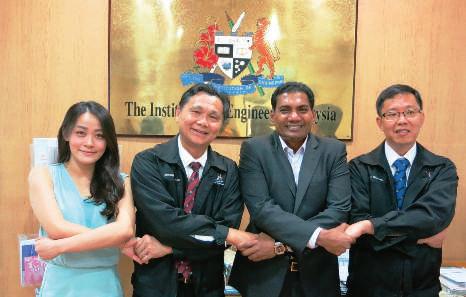
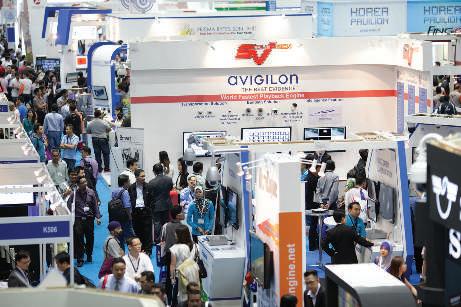
Ir. Loo Chee Kin, the Organising Chairman, says the forum will have two streams that align three titles under each stream. Stream 1 will cover: (1) Green Energy and Sustainability (2) Power and (3) REVAC. Topics under Green Energy and Sustainability include ‘Why Green Energy and Sustainability’ and ‘Hydrocarbon as Greener and More Efficient Refrigerants’.
He says that traditional refrigerants have had adverse effects on the environment with rather high global warming potential, even though the use of refrigerants with ozone
depletion potential, is restricted. He adds that a group of industry players in Malaysia is promoting gases that are not man-made but rather, are natural occurring gases, such as methane and propane. Malaysia is now working on developing a Malaysian Standard (MS) to address the safe
use of these gases, which will be highlighted at one of the sessions.
The forum on Power will discuss, among others, ‘Renewable Energy (RE) Policy and the Latest Development of RE in Malaysia’ and the ‘Latest Electrical Installations Requirements’. REVAC forum will include topics such as ‘Commissioning Process for Smoke’ and ‘Healthcare Ventilation System Requirements and Challenges’.
Elaborating on Stream 2, Ir. Loo says the three topics are ‘Development in Codes and Standards’, ‘M&E Infrastructure’ and the most important area is ‘Safety and Risk Control’. He says: “At times, engineers are at fault because they may not fullyunderstandsafetyrequirements.Forexample,theremay be lifts and escalators in shopping complexes that are not fully compliant to current safety standards. That’s why one of the topics to be covered under Safety and Risk Control is Lift and Escalator Code in Malaysia.”




Ir. Dr Cheong says engineers attending the forum can earn points under the Continuing Professional Development (CPD) Accreditation. He says the IEM forum at ASEAN M&E 2016 is designed to foster closer working relationships among engineers and to raise awareness among its members of the latest developments in technology, issues and legislation related to engineering including mechanical and electrical.
He adds that partnerships between engineers and the M&E industry can materialise at the IEM Forum and the exhibition halls. IEM’s participation in the event also helps to pave the way for all engineers to engage with ASEAN engineering associations which will allow the engineers to excel both locally and internationally.
The M&E Expo 2016, Southeast Asia’s biggest international building services and electrical engineering exhibition, in Kuala Lumpur will have three power-packed shows under one roof. These are the TENAGA Expo & Forum (Southeast Asia’s Premier Power & Electrical Industry Show), REVAC Expo & Forum (Southeast Asia’s International Refrigeration, Ventilation & Air-conditioning Event), and Green Energy Asia (Southeast Asia’s International Green Energy & Conference).
To be held at Kuala Lumpur Convention Centre (KLCC) on 23-25 May, the Expo will attract 10,500 trade professionals from around the region. Over 350 exhibitors have confirmed participation, with displays to be spread over 10,000 square metres of the entire ground exhibition halls of KLCC.
The event, which is the sixth edition of the ASEAN M&E Expo, is an excellent platform for engineers and other trade professionals to keep abreast with industry developments and innovations as well as to network, conduct business and forge alliances. Held biennially in Kuala Lumpur with complementary M&E shows in Indonesia and Vietnam, the expo is organised by United Business Media (M) Sdn. Bhd. (UBM). This year’s edition is endorsed by the Malaysia External Trade Development Corporation (MATRADE) and supported by the Ministry of Energy, Green Technology and Water (Kementerian Tenaga, Teknologi Hijau dan Air or KeTTHA), Construction Industry Development Board



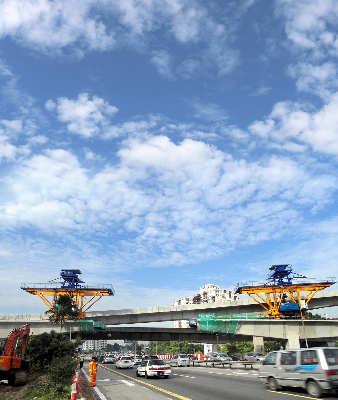

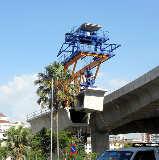

(CIDB), the Institution of Engineers, Malaysia (IEM), Malaysian Air-Conditioning & Refrigeration Association (MACRA) and The Electrical and Electronic Association of Malaysia (TEEAM). The host utility is Tenaga Nasional Berhad while the ‘Co-located Conference’ is the Malaysian Chapter of the American Society of Heating, Refrigerating and Air Conditioning Engineers (ASHRAE).
UBM Managing Director (ASEAN Business) M. Ghandi says the ASEAN M&E Expo is where engineers in the ASEAN region can network and share ideas that relate to M&E products and services.
“The main objective of this year’s show is for engineers to challengethestatusquointhepracticeofM&Eengineering. One of the current challenges faced by engineers relates to the changing dimensions of energy itself,” he says, adding that there is also a major change in the dimensions globally. He explains that building designs are no longer done based on the way energy and electricity are transmitted and distributed. These designs as well as the way business in the world is conducted are also affected by the ability of consumers to produce energy themselves using different sources, such as solar energy and geothermal.
“An important dimension already taking shape is power storage. Last year, US-based company Tesla Motors ran pilot demonstrations of Power wall, a rechargeable lithium-ion battery for home use. It stores electricity for domestic use, and provides backup electricity supply. It is energy storage for a sustainable home and offers independence from the conventional utility grid,” says Ghandi.
Tesla’s creation of low-cost home battery pack, expectedtohitthemarketnextyear,hashelpedraisepublic awareness of a field that is booming with innovation and the potential of billion-dollar global investment.
Such development, continues Ghandi, will challenge the way that Malaysia and all other ASEAN member countries manage the future of M&E, particularly where renewable energy and energy savings are concerned.
“Some utility companies may even close business. For example, RWE AG, the largest utility company in Germany has seen their business dropping to nearly 80% in the last five years when consumers started to produce energy themselves. Another German utility company, E.ON SE, is shrinking its core conventional and unprofitable power generation business and will instead focus on renewable energy, and building its distribution network and providing customer solutions,” he says.
The Deputy Chairman of IEM Mechanical Engineering Technical Division (METD), Ir. Loo Chee Kin, says Malaysia aimstoincreasetheuseofrenewableenergyto30%by2020 undertheASEANMinistersofEnergyMeetingagendain2014. The share of renewable energy (RE) in Malaysia is currently less than 15%. He says one of the measures being looked into by the government is the use of net energy meters as an alternative incentive to meet the increase capacity for RE capacity in Malaysia. Net metering allows anyone with

a connection to the electricity grid to sell self-generated electricity to the grid and to claim back credits on their electricity bill. This holds well for small-scale solar generators on roof tops, as the generation will be near the load.
Another development in power generation is the proposed plan to have a single ASEAN power grid to connect all the power supplies of ASEAN countries. Ghandi
Title: IEM Mechanical & Electrical Forum (Green Energy & Sustainable) (Kuala Lumpur Convention Centre)
23 May 2016
Organisedby :TheInstitutionofEngineers,Malaysia
Time : 10.00 a.m. – 5.30 p.m.
CPD/PDP :Applying
Title: IEM Mechanical & Electrical Forum (Development in Code and Standards) (Kuala Lumpur Convention Centre)
23 May 2016
Organisedby :TheInstitutionofEngineers,Malaysia
Time : 10.00 a.m. – 5.30 p.m.
CPD/PDP :Applying
Title: IEM Mechanical & Electrical Forum (Power) (Kuala Lumpur Convention Centre)
24 May 2016
Organisedby :TheInstitutionofEngineers,Malaysia Time : 10.00 a.m. – 5.30 p.m. CPD/PDP :Applying
says while having this grid is possible, it will involve huge investment. Ir. Loo adds that currently Malaysia has a limited grid connection with Thailand and Singapore. “It is not so much a grid that runs 24/7 but, rather it’s for Malaysia and Thailand to share power with each other during the different power peak periods,” he says. n
Title: IEM Mechanical & Electrical Forum (M&E Infrastructure) (Kuala Lumpur Convention Centre)
24 May 2016
Organisedby :TheInstitutionofEngineers,Malaysia Time : 10.00 a.m. – 5.30 p.m. CPD/PDP :Applying
Title: IEM Mechanical & Electrical Forum (REVAC) (Kuala Lumpur Convention Centre)
25 May 2016
Organisedby :TheInstitutionofEngineers,Malaysia Time : 10.00 a.m. – 5.30 p.m.
CPD/PDP :Applying
Title: IEM Mechanical & Electrical Forum (Safety and Risk Control) (Kuala Lumpur Convention Centre)
25 May 2016
Organisedby :TheInstitutionofEngineers,Malaysia Time : 10.00 a.m. – 5.30 p.m. CPD/PDP :Applying
Kindly note that the scheduled events below are subject to change. Please visit the IEM website at www.myiem.org.my for more information on the upcoming events.
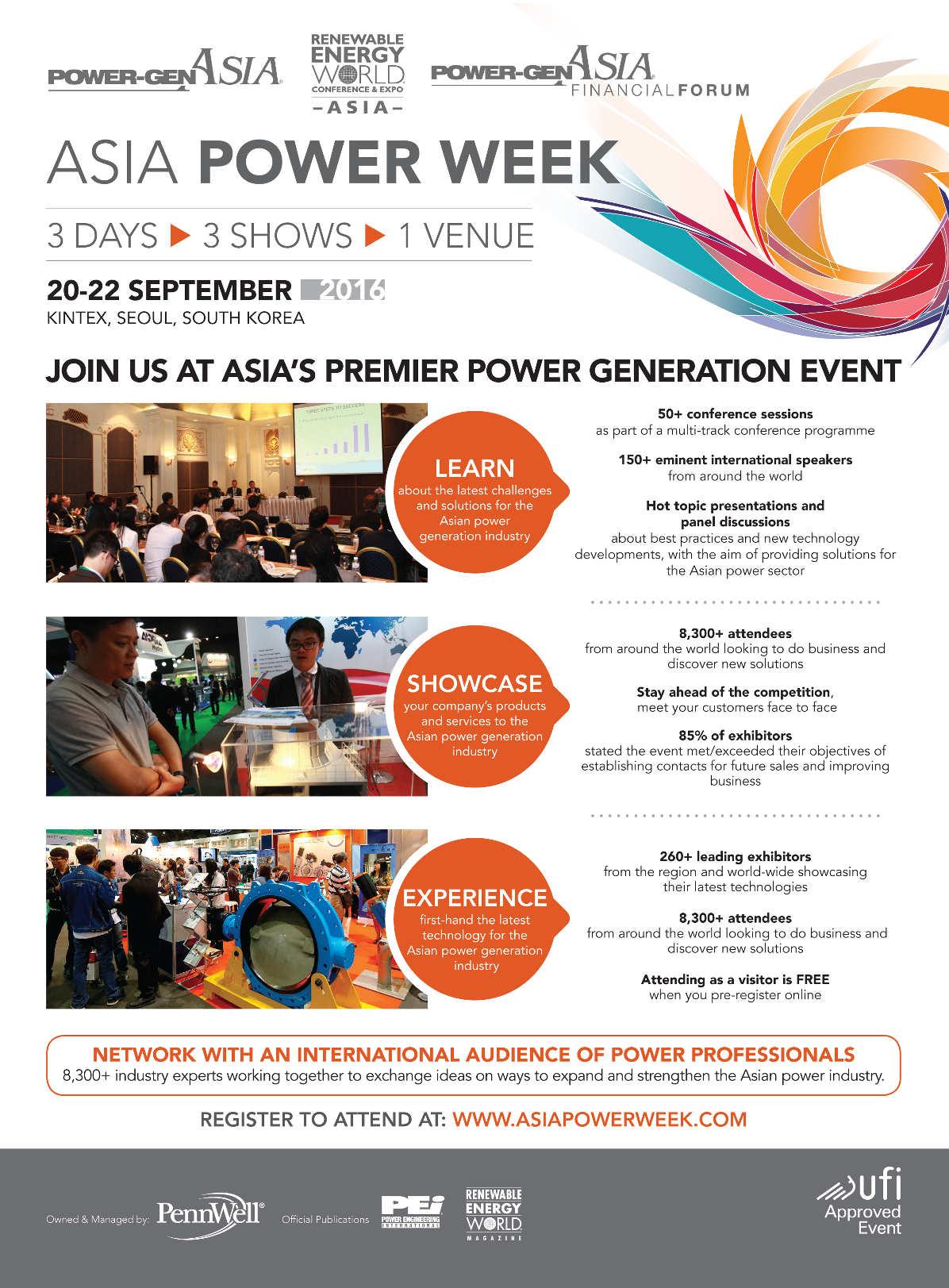
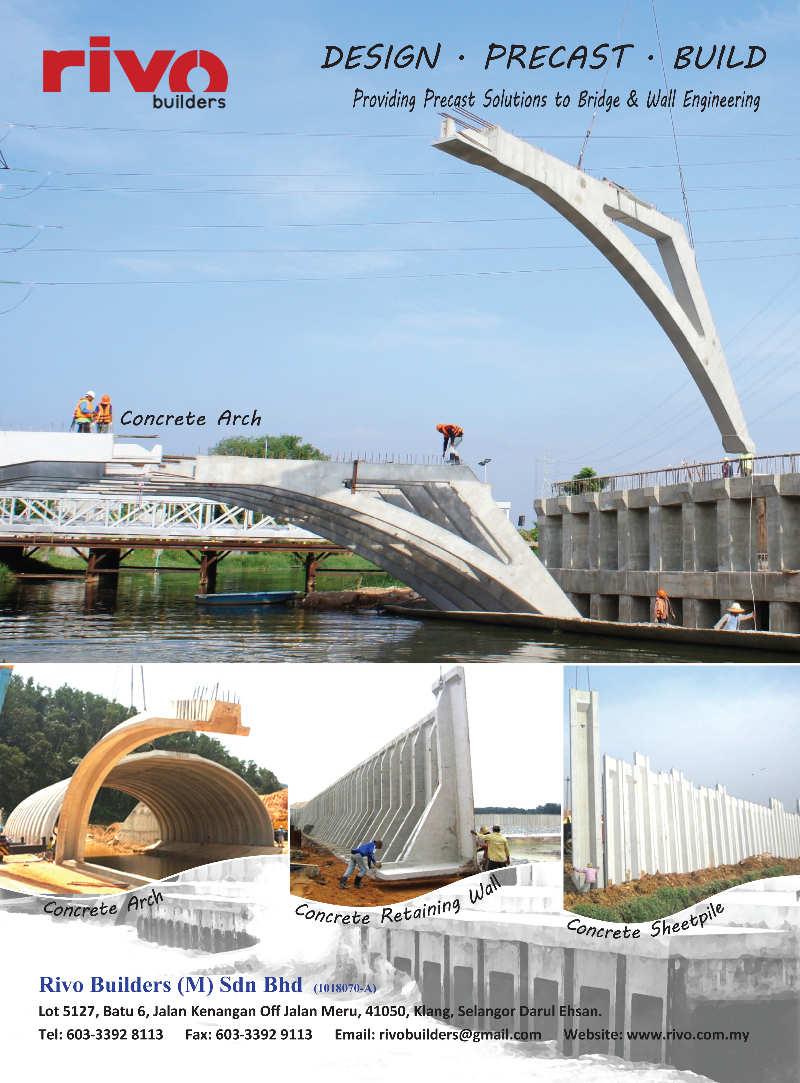
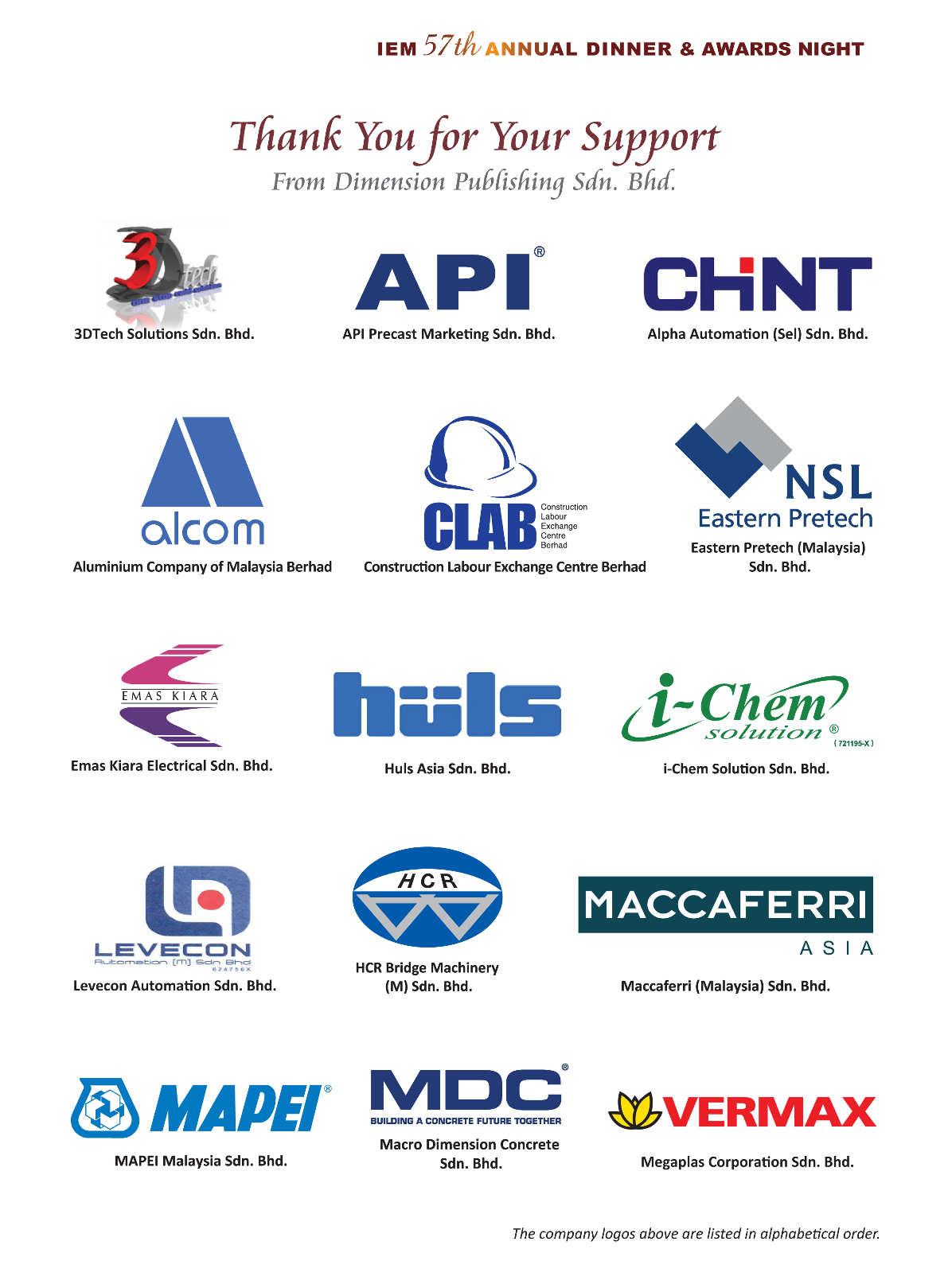




















Izni Zahidi is currently attached with CH2M as a water engineer and inishing a PhD in water resources engineering at Universiti Putra Malaysia. She has lived in ive different countries as part of her studies and travelled to many more.
There are times when travel becomes even more memorable because of someone you meetinsteadofthedestinationitself.Thiswas true for one of my most thrilling field trips deep into the forest in south Hungary, 150km from the capital, Budapest.
To this day, I still don’t know the name of the forestbutIcanremembervividlythedayitself.The closest town was Baja, known to be a delightful place for those who love the sun and water.
As I was coming from a tropical country to study its water resources, I was really looking forward to the trip. The purpose was to demonstrate the application of Acoustic Doppler Current Profiler (ADCP) on the River Danube, Europe’s second longest river which passes through Hungary, Austria, Romania, Bulgaria, Slovakia, Ukraine, Croatia, Serbia and Moldova.
The ADCP was mounted on a motorboat to measure the river depth and velocity based on the Doppler Effect. It works by transmitting highfrequencypulsesofsoundwhicharereflectedby moving particles in the water. The speed of the water current can subsequently be estimated as, carried by the water, the particles move at the same speed.
Although it was exciting to get on the motorboat and to see the action, the best part of the trip was yet to come. Because they live by the river, the people of Baja have developed a love for eating fish.
So, when we took a detour to visit a fisherman who was a friend of the professor’s, we knew we were in for a treat. Better known as Forest Man, the fisherman lived with his family in the forest. To get there, we were ferried there by the Forest Man in his motorboat.
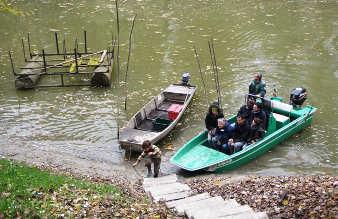
His was probably the only house in the forest which depended on moonlight and fire for light and energy, and the river for water. They not only built their home on their own, but fished and made their own food as far as possible.
I had seen it on National Geographic a few times but to actually watch Forest Man and his 7-year-old son catching pike and carp using their bare hands, was eye-opening.
His daughter, who was just a bit older than her brother, then chopped the fish heads off as if she had been doing it all her life (and she probably had).
His wife then cooked us the best traditional Hungarianfishstewoverawoodfire.Alsoknown as fisherman’s soup with pasta, this was made from scratch. Everything was homemade, even the drinks. She made wild cherry syrup from fruit that she picked behind their hut. It could not be any more rustic than this.
The family did not speak much English but, as we sat by the fire to keep warm, Forest Man managed to share with us some of his adventures. These were so interesting that we forgot about the Internet or the fact that we were in a forest somewhere in the Eastern Europe.
It was only when it became pitch dark that we realised it was time to leave. We held hands and walked as Forest Man and his son guided us back to the motorboat with only headlamps. The son also took us on the motorboat back to the shore.
Nobody in our group said a word but I guessed we were all praying we’d get to the shore safely. Unlike a visit to a destination which can be repeated, the evening spent with Forest Man and his family is priceless.

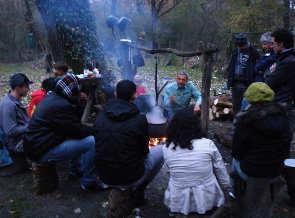

Kepada Semua Ahli,
Tarikh: 11 April 2016
2016
BerikutadalahsenaraicalonyanglayakuntukmendudukiTemuduga Profesional bagi tahun 2016.
Mengikut Undang-Undang Kecil IEM, Seksyen 3.8, nama-nama seperi terse arai erikut diter itka se agai alo - alo a g la ak u tuk e jadi Ahli I situsi, de ga s arat aha a ereka lulus Temuduga Profesional tahun 2016.
Sekiranya terdapat Ahli Korporat yang mempunyai bantahan terhadap a a- a a alo a g didapai idak sesuai u tuk menduduki Temuduga Profesional, surat bantahan boleh dike ukaka kepada Seiausaha Kehor at, IEM. Surat a taha hendaklahdikemukakansebulandaritarikhpenerbitandikeluarkan.
Ir. Yam Teong Sian Seiausaha Kehor at, IEM,
PERMOHONAN BARU NamaKelayakan
KEJURUTERAAN AWAM
JACKLYN ANAK DOMINIC MERICKANBE HONS (MALAYA) (CIVIL, 2003)
LING SENG HUAT, JIMMYBE HONS (PLYMOUTH) (CIVIL, 2004)
MOHD FALIZAN BIN YUSOFBE HONS (UTM) (CIVIL, 2001)
NOOR AZEAN BINTI AHMAD BE HONS (UNISEL) (CIVIL, 2007)
KEJURUTERAAN AUTOMOTIF
MOHD FAIRUZ BIN IZANIBE (IWATE) (MECHANICAL, 2007)
KEJURUTERAAN ELEKTRIKAL
CHIA HUNG KWANG, BONIFACE BE HONS (MULTIMEDIA) (ELECTRICAL, 2002) MESc (MULTIMEDIA) (2005)
MOHD MUZHAR B. AHMAD TAJUDDINBE HONS (UiTM) (ELECTRICAL, 2002)
ROSEMIZI BIN ABD RAHIMBE HONS (UiTM) (ELECTRICAL, 2000)
YOSSIE OKTORA BINTI MUHAMADBE HONS (UKM) (ELECTRICAL, ELECTRONIC & SYSTEM, 2001) ME (UTM) (ELECTRICAL POWER, 2012)
KEJURUTERAAN ELEKTRONIK
RIZALAFANDE BIN CHE ISMAIL BE HONS (UTM) (ELECTRICAL - ELECTRONICS, 2002) ME (RMIT) (MICROELECTRONIC, 2005) PhD (NEWCASTLE UPON TYNE) (2012)
KEJURUTERAAN MEKANIKAL
AHMAD NAZWAN BIN MAT ZINBE HONS (UKM) (MECHANICAL, 2002)
AZAN BIN ZAINUDDIN BE HONS (UKM) (2001)
YONG LEONG HUA BE (RMIT) (MECHANICAL, 2001) MBA (SOUTHERN PACIFIC, 2007) PERPINDAHAN AHLI No. AhliNamaKelayakan
KEJURUTERAAN AWAM
29737 CHAI CHUAN YEAW BE HONS (UNITEN) (CIVIL, 2006)
53739FAUZIAH BINTI MOHD SAIDBE HONS (UTM) (CIVIL, 2000)
24082 FUNG WEN YIN BE HONS (MALAYA) (CIVIL, 2006) MSc (SINGAPORE) (CIVIL, 2011)
44129 GAN TZE NENG BE HONS (CURTIN) (CIVIL &CONSTRUCTION, 2009)
57079 KUMARAN A/L KUMARAWEH BE HONS (UTM) (CIVIL, 2006)
25517MICHAEL KOAY BE HONS (UTM) (CIVIL, 2001) ME (UTM) (CIVIL-STRUCTURE, 2003)
64731 MOHD AMRI SAIFULLAH BIN A RAHMAN BE HONS (UTM) (CIVIL, 2011)
23750RAAZLIZAM BIN LIASBE (HONS) (UiTM) (CIVIL, 2004)
53740RIZWAN BIN IDRIS ZAINUDDINBE HONS (UTM) (CIVIL-ENVIRONMENTAL, 2003)
36301 SELVANASON A/L KRISHNAN BE HONS (UTM) (CIVIL, 2005)
8381SONG SWEE KIAN, MERVYNBSc (CANTERBURY) (CIVIL, 1981)
37244SRI RAM A/L RAMANKUTTYBE HONS (UTM) (CIVIL, 2006)
23436TEO CHING LEE, DELSYE BE (CURTIN) (CIVIL & CONSTRUCTION, 2002) PhD (UMS) (CIVIL, 2007)
18242TOH LING CHUENBSc (NEW BRUNSWICK) (CIVIL, 1996)
19826UNG HUI HUI BE (HONS) (UTM) (CIVIL,2002) ME (ASIAN INSTITUTE OF TECHNOLOGY, 2004)
KEJURUTERAAN ELEKTRIKAL
53993 AHMAD AFIQ BIN CHE AZAM BE HONS (UiTM) (ELECTRICAL, 2008)
59045KHAIRULAMRI BIN SALEHBE HONS (UTeM) (CONTROL, INSTRUMENTATION & AUTOMATION, 2008)
44572MD PAUZI BIN ABDULLAHBE HONS (UNITEN) (ELECTRICAL & ELECTRONICS, 2002) MSc (STRATHCLYDE) (ELECTRICAL POWER, 2004)
55863MOHD HAZIM BIN MAT SAMANME HONS (SOUTHAMPTON) (ELECTRICAL, 2010)
KEJURUTERAAN ELEKTRONIK
41266 LAU YEW PANG BSc (UNITED STATES NAVALACADEMY, 2009)
37064MAHATHIR BIN MARZUKIBSc (OHIO) (ELECTRICAL & COMPUTER, 2007) 21620 SHASHIKUMAR A/L KRISHNAN BE HONS (MMU) (ELECTRONICS, 2002) MSc (UPM) (ELECTRICAL POWER, 2008)
KEJURUTERAAN KIMIA
70251 AMIZA BINTI AZMI BE HONS (UiTM) (CHEMICAL, 2006) ME (UM) (SAFETY, HEALTH & ENVIRONMENT, 2013)
79031LEO CHOE PENG BE HONS (UKM) (CHEMICAL, 2004) PhD (USM) (2008)
59901MUSA BIN MA'AMORBE HONS (UiTM) (CHEMICAL, 2009)
26348CHONG CHIEN HWA BE HONS (UTM) (CHEMICAL, 2007) PhD (NOTTINGHAM) (2010)
KEJURUTERAAN MEKANIKAL
54516 LEE WEI TECK, THOMAS BE HONS (MALAYA) (MECHANICAL, 2006)
79259LIM CHAN CHENGBE HONS (MULTIMEDIA) (MECHANICAL, 2009) 52601LINGESHWARAN RAMACHANDRAN BE HONS (UNITEN) (MECHANICAL, 2012) 25449MOHD NORHAZLEE BIN NAWAWIBE HONS (UTM) (MECHANICAL, 2003)
38874RUDIYANTO BIN PHILMAN JONG BE HONS (UTM) (MECHANICAL, 2008) ME (UTM) (MECHANICAL, 2014)
PERMOHONAN BARU MENJADI AHLI KORPORAT
KEJURUTERAAN AWAM
-BENEDICT CHAN WEI CHIANGBE HONS (UiTM) (CIVIL, 2007) -WONG LING GINBE HONS (UTM) (CIVIL, 1995)
KEJURUTERAAN MEKANIKAL
-ANA MIRAA MOHD YUSOFBE HONS (QUT) (MECHANICAL, 1999)
- JAMALUDDIN ASMUNI BE HONS (MALAYA) (MECHANICAL, 1996)
PEMINDAHAN MENJADI AHLI KORPORAT
KEJURUTERAAN ELEKTRONIK
15452SHARANJIT SINGH A/L KARPAL SINGH BE HONS (UKM) (ELECTRICAL, ELECTRONIC & SYSTEM, 1995)
KEJURUTERAAN MEKANIKAL
48120TERENCE CHAN PAUL WANGBE HONS (UNIMAS) (MECHANICAL & MANUFACTURING SYSTEM, 2008)
ERRATA
The report for cover story in March 2016 JURUTERA was contributed by Ir. Paul Pho Chi Wei and Ir. Assoc. Prof. Dr Leong Wai Yie
Title: 2-day Course on Malaysian Civil Engineering Standard Method of Measurement (MyCESMM) With Details on Roadworks and Drainage Works 24 - 25 May 2016
Organisedby :SubCommitteeonEngineering ContractsofStandingCommitteeon ProfessionalPractice
Time : 8.00 a.m. – 6.00 p.m. CPD/PDP :15
Kindly note that the scheduled events below are subject to change. Please visit the IEM website at www.myiem. org.my for more information on the upcoming events.
78684WAN NUR HAFEZA
HASLINDA WAN HASSAN 2ND YEAR (UMP) (CIVIL)
78804 WAN NURULHAZWANI BT WAN
SAHARUDDIN 4TH YEAR (UMP) (CIVIL)
WANG HUIXIN 1ST YEAR (UTAR)(CIVIL)
WEE WEI JOE 1ST YEAR (UNITEN) (CIVIL)
WONG DAI KING 1ST YEAR (SWINBURNE) (CIVIL)
WONG ING MING 2ND YEAR (SWINBURNE) (CIVIL)
WONG JIA HAN 2ND YEAR (UTAR)(CIVIL)
WONG MING MING 1ST YEAR (SWINBURNE) (CIVIL)
WONG SHI WEI 2ND YEAR (UTAR)(CIVIL)
WONG SHYUNG HAW3RD YEAR (UTAR) (CIVIL)
WONG WY UENN, JOHAN 3RD YEAR (UTAR) (CIVIL)
78726 WONG YIH KANG 4TH YEAR (UMP) (CIVIL)
WONG YIN MENG2ND YEAR (UTAR)(CIVIL)
YAP EE MEI3RD YEAR (UTAR) (CIVIL)
78723 YAP HIEW THONG 4TH YEAR (UMP) (CIVIL)
YAP KE HAN3RD YEAR (UTAR) (CIVIL)
YAP TZE LIT 3RD YEAR (UTAR) (CIVIL)
78792 YAP YEE VON 4TH YEAR (UMP) (CIVIL)
78795YII LI JHIA 3RD YEAR (UMP) (CIVIL)
YIP JIA JUN3RD YEAR (UTAR) (CIVIL)
YONG CHIA CHI, GRACE 1ST YEAR (SWINBURNE) (CIVIL)
YU CHIA SHENG 1ST YEAR (UTAR)(CIVIL)
78752YUSRINA BINTI MHAMD AZIZMY 4TH YEAR (UMP) (CIVIL)
78685 YUVARAJ A/L YATHAGAN 1ST YEAR (UMP) (CIVIL)
ZAHIR SOLIHIN BIN ZAWAWI 1ST YEAR (UTHM) (CIVIL)
ZAINUL HAZWANI BINTI ABD SAMAD 1ST YEAR (UNITEN) (CIVIL)
78683ZURAIDA BINTI HASBULLAH 1ST YEAR (UMP) (CIVIL)
78789ZURIYANI BINTI ZULKIFLI 3RD YEAR (UMP) (CIVIL)
KEJURUTERAAN BIOPERUBATAN
CHAI LI CHING 3RD YEAR (UTAR) (BIOMEDICAL)
HENG YEH TAT1ST YEAR (UTAR) (BIOMEDICAL)
YEOH HSIEN HUI 3RD YEAR (UTAR) (BIOMEDICAL)
KEJURUTERAAN ELEKTRIKAL
ABDUL HADI B. MUSTAFA 1ST YEAR (UTHM) (ELECTRICAL)
ABDUL MUKMIN BIN
ABDUL MALIK 1ST YEAR (UTHM) (ELECTRICAL)
ADAM AFIQ BIN
AZLAN TAN 1ST YEAR (UTHM) (ELECTRICAL)
ADHWA' AFNAN
HAFIY BIN ABDUL SANI 1ST YEAR (UNITEN) (ELECTRICAL)
ADHWAAMSYAR
SYAZWAN B AB. MAJID 1ST YEAR (UTHM) (ELECTRICAL)
AFIQAH BINTI
ZAKWAN 1ST YEAR (UNITEN) (ELECTRICAL)
AHMAD AMIRUL
SALIHIN BIN AHMAD FAUZI 1ST YEAR (UNITEN) (ELECTRICAL)
AHMAD AZEEM BIN RAZALI 1ST YEAR (UNITEN) (ELECTRICAL)
AHMAD AZIM BIN MAT RABI 1ST YEAR (UNITEN) (ELECTRICAL)
AHMAD KAUTHAR B. HAFIL 1ST YEAR (UTHM) (ELECTRICAL)
AHMAD LUQMAN CHE KASIM 4TH YEAR (UMP) (ELECTRICAL)
AHMAD SYAMIL
BIN ALI 1ST YEAR (UNITEN) (ELECTRICAL)
AIELRAY BIN AZMAN 1ST YEAR (UTHM) (ELECTRICAL)
AIN ATHIRAH BT KAMAROZAMAN 1ST YEAR (UNITEN) (ELECTRICAL)
AINA SYAZWANI BADROL HISHAM 1ST YEAR (UNITEN) (ELECTRICAL)
AISYA' ZULAIKHA BINTI MOHD ADNAN 1ST YEAR (UNITEN) (ELECTRICAL)
ALVIN CHUA CHEE SIANG 1ST YEAR (UNITEN) (ELECTRICAL)
AMAR AIZAT BIN ROSMAN 1ST YEAR (UTHM) (ELECTRICAL)
AMEEN ASYRAF BIN AZMAN 1ST YEAR (UTHM) (ELECTRICAL)
AMIRUL HAKIM BIN SUID 1ST YEAR (UTHM) (ELECTRICAL)
AMMAR SYAHMI B. MOHD ANUAR 1ST YEAR (UTHM) (ELECTRICAL)
78815ANANTH KRISHNAN A/L BALACHANDRAN 1ST YEAR (UMP) (ELECTRICAL)
ANIS ADIBA BINTI ZAWAWI 1ST YEAR (UNITEN) (ELECTRICAL)
ASHRIQ B.
KHARULANNUAR 1ST YEAR (UNITEN) (ELECTRICAL)
ASYIQQIN BT MAZLAN 1ST YEAR (UNITEN) (ELECTRICAL)
AZIEAZITA BINTI ABD AZIZ 1ST YEAR (UNITEN) (ELECTRICAL)
AZREEN BINTI AWALLUDIN 1ST YEAR (UNITEN) (ELECTRICAL)
BAVINTHIRAN A/L YUGAPURIAN 1ST YEAR (UNITEN) (ELECTRICAL)
CHE MOHAMAD
AZFAR BIN CHE AFRI 1ST YEAR (UNITEN) (ELECTRICAL)
CHEONG SERENE 1ST YEAR (UNITEN) (ELECTRICAL)
CHIA YING YUEN1ST YEAR (UNITEN) (ELECTRICAL)
CHO ZIN MYINT 3RD YEAR (CURTIN) (ELECTRICAL)
CHOO XIU HUOI 1ST YEAR (UNITEN) (ELECTRICAL)
CHU KOK YEOW, PETER 1ST YEAR (UNITEN) (ELECTRICAL)
DARMINDERJEET
SINGH A/L TELOK SINGH 1ST YEAR (UNITEN) (ELECTRICAL)
DAVEKUMAR A/L
RAJENDRAN 1ST YEAR (UNITEN) (ELECTRICAL)
DINESHEN A/L MAHENDRAN 1ST YEAR (UNITEN) (ELECTRICAL)
DONNA NALES ANAK NYAWAI 1ST YEAR (UNITEN) (ELECTRICAL)
ERIKSON JANANG
ANAK TINGOM 1ST YEAR (UNITEN) (ELECTRICAL)
EZMITH HAIKAL BIN
AMIRNUDDIN 1ST YEAR (UTHM) (ELECTRICAL)
FAISAL BIN
MOHAMAD 1ST YEAR (UNITEN) (ELECTRICAL)
FATIN ATHIRAH
MOHD JAIH 1ST YEAR (UTHM) (ELECTRICAL)
FATIN NUR SYAHIRAH
BT SHAHRIMAN 1ST YEAR (UNITEN) (ELECTRICAL)
FILARIUS PETER USOP 1ST YEAR (UNITEN) (ELECTRICAL)
GAHBILAN A/L
DEVADAS 1ST YEAR (UNITEN) (ELECTRICAL)
GAN BENG CHUN 1ST YEAR (UNITEN) (ELECTRICAL)
HALIMAHTUSS SAADIAH BINTI ROSDIN 4TH YEAR (UMP) (ELECTRICAL)
HAZARUL FASKAH
BIN RASID 1ST YEAR (UTHM) (ELECTRICAL)
HAZIQ DANIAL BIN
SHAHRULHISHAM 1ST YEAR (UNITEN) (ELECTRICAL)
HOE ZI WEI 1ST YEAR (UTHM) (ELECTRICAL)
HUANG XIANG EN 1ST YEAR (UNITEN) (ELECTRICAL)
JANAARTANAN A/L
KUNJIKANNAN 1ST YEAR (UTHM) (ELECTRICAL)
JULIO NATALION BIN JULIP 4TH YEAR (UMP) (ELECTRICAL)
KESHANRAJ A/L
BALAKRISHNAN 1ST YEAR (UNITEN) (ELECTRICAL)
KHAIRI SAADAH BINTI
AZZAHARI 1ST YEAR (UNITEN) (ELECTRICAL) 78429KU SHIN FENG 3RD YEAR (UMP) (ELECTRICAL)
LEE WEI JIAN 1ST YEAR (UNITEN) (ELECTRICAL)
LEE YUAN JET, KEVIN 1ST YEAR (MMU) (ELECTRICAL)
LIM JIAN XIU 1ST YEAR (UTHM) (ELECTRICAL)
LOGESHWARI RAJA 1ST YEAR (UNITEN) (ELECTRICAL)
MELISSA JULIANA BT
MARZUKI 1ST YEAR (UNITEN) (ELECTRICAL)
MOHAMAD AZHARI
BIN BASARUDDIN 4TH YEAR (UMP) (ELECTRICAL)
MOHAMAD FADHIL
BIN SAIDI 1ST YEAR (UTHM) (ELECTRICAL)
MOHAMAD FARHAN
BIN MOHAMED 1ST YEAR (UNITEN) (ELECTRICAL)
MOHAMAD HANAFFIE
BIN HASHIM 1ST YEAR (UTHM) (ELECTRICAL)
MOHAMAD ILMI BIN ZAKARIA 4TH YEAR (UMP) (ELECTRICAL)
MOHAMAD KAMIL BIN ROMAI NOOR 1ST YEAR (UTHM) (ELECTRICAL)
MOHAMAD NUR AIMAN BIN MOHD SAID 1ST YEAR (UTHM) (ELECTRICAL)
MOHAMMAD FAUZAN B. ROSLAN 1ST YEAR (UTHM) (ELECTRICAL)
MOHAMMAD NAJMI BIN MOHD RADZI 1ST YEAR (UNITEN) (ELECTRICAL)
MOHAMMED FAHMI AHMED ESMAIL 1ST YEAR (UNITEN) (ELECTRICAL)
MOHD FAIQ AMEIR B. MOHD KAMARUZAMAN 1ST YEAR (UNITEN) (ELECTRICAL)
MOHD HAFIZUL BIN FAUZI 1ST YEAR (UTHM) (ELECTRICAL)
MOHD SHAHFIZAN BIN ABDUL WAHID 3RD YEAR (UMP) (ELECTRICAL)
MOHD SYAZWAN BIN SAIT 1ST YEAR (UNITEN) (ELECTRICAL)
MUHAMAD ALI ZULKARNAIN BIN ROSLI 1ST YEAR (UTHM) (ELECTRICAL)
MUHAMAD FAIZ NAZRIN BIN BAHARIN 1ST YEAR (UNITEN) (ELECTRICAL)
MUHAMAD FAIZUAN BIN PAUZI 1ST YEAR (UTHM) (ELECTRICAL)
MUHAMAD FAKRI B. MOHD FADI @ MOHD FADZIL 1ST YEAR (UNITEN) (ELECTRICAL)
MUHAMAD FARIS BIN FAUZI 1ST YEAR (UNITEN) (ELECTRICAL)
MUHAMAD FAYYADH BIN ISMAIL 1ST YEAR (UNITEN) (ELECTRICAL)
MUHAMAD IKMAL HAKIM BIN MOHD ANUAR 1ST YEAR (UNITEN) (ELECTRICAL)
MUHAMAD NAJIB BIN
MUHMAD NASIR 1ST YEAR (UNITEN) (ELECTRICAL)
MUHAMAD NOR IZHAM BIN ZAILAM 1ST YEAR (UTHM) (ELECTRICAL)
MUHAMAD SOLAHUDDIN BIN MUHAMAD SALIM 1ST YEAR (UTHM) (ELECTRICAL)
MUHAMMAD AFIF AMIR BIN ARAZMI 1ST YEAR (UNITEN) (ELECTRICAL)
MUHAMMAD AIMAN BIN NOOR AFFENDI 1ST YEAR (UTHM) (ELECTRICAL)
MUHAMMAD AIZAL BIN AKMAR 1ST YEAR (UNITEN) (ELECTRICAL)
MUHAMMAD ALIFF HAIKAL BIN MOHAMMAD SOFFI 1ST YEAR (UTHM) (ELECTRICAL)
MUHAMMAD AMIRUL ADLI BIN MOHD NOH 1ST YEAR (UNITEN) (ELECTRICAL)
MUHAMMAD AMIRUL B MOHD ROSLEI 1ST YEAR (UTHM) (ELECTRICAL)
MUHAMMAD AMMAR FAHMI BIN ZAINOL 3RD YEAR (UMP) (ELECTRICAL)
MUHAMMAD ASWAD BIN AHMAD 1ST YEAR (UTHM) (ELECTRICAL)
MUHAMMAD AZFAR B. MOHAMMAD NARAZIAN 1ST YEAR (UNITEN) (ELECTRICAL)
MUHAMMAD FAHMI BIN ABD RAZAK 1ST YEAR (UNITEN) (ELECTRICAL)
MUHAMMAD HAZIM BIN BORHAN 1ST YEAR (UTHM) (ELECTRICAL)
MUHAMMAD HAZWAN BIN HARUN 1ST YEAR (UNITEN) (ELECTRICAL)
MUHAMMAD IZZAT BIN SAZALI 1ST YEAR (UNITEN) (ELECTRICAL)
MUHAMMAD IZZUDDIN BIN NOOR SALI 1ST YEAR (UNITEN) (ELECTRICAL)
MUHAMMAD KAMAL AMZAR BIN KAMAL 1ST YEAR (UTHM) (ELECTRICAL)
MUHAMMAD NAJMI B CHE SEMAN 1ST YEAR (UTHM) (ELECTRICAL)
MUHAMMAD REZA BIN KHALIB 3RD YEAR (UMP) (ELECTRICAL)
MUHAMMAD SYAFIQ BIN AZHAR 1ST YEAR (UTHM) (ELECTRICAL)
MUHAMMAD SYAKIR BIN YUSRI 1ST YEAR (UNITEN) (ELECTRICAL)
MUHAMMAD TAUFIQ HIDAYAT BIN EMRAN 1ST YEAR (UNITEN) (ELECTRICAL)
MUHAMMAD THAQIB B KHAIRUDIN 1ST YEAR (UTHM) (ELECTRICAL)
MUHAMMAD ZAIM B ZULKEFLI 1ST YEAR (UTHM) (ELECTRICAL)
MUHAMMAD ZAWIR AQWA B. AHMAD SHAARI 1ST YEAR (UTHM) (ELECTRICAL)
MUHD FAIZ BIN MUNAHIR 1ST YEAR (UTHM) (ELECTRICAL)
MUHD KHAIRUZAMAN BIN MOHD JAMRI 1ST YEAR (UTHM) (ELECTRICAL)
MUKISH KUMAR A/L
MUNYADY 1ST YEAR (UNITEN) (ELECTRICAL)
MURSYID BIN
MUHAMMAD 1ST YEAR (UNITEN) (ELECTRICAL)
MUZAFFAR NAEEM
BIN MANSOR 1ST YEAR (UNITEN) (ELECTRICAL)
NABILAH MUNIRAH BINTI SUED 4TH YEAR (UMP) (ELECTRICAL)
NADZIRAH BINTI
NOOR HUZAILI 1ST YEAR (UNITEN) (ELECTRICAL)
NOOR HIDAAYAH BINTI MOHD NGABAS 1ST YEAR (UTHM) (ELECTRICAL)
NOOR IKHWAN BIN
MAZALAN 1ST YEAR (UNITEN) (ELECTRICAL)
NOR AIN BINTI ZAKARIYA 1ST YEAR (UNITEN) (ELECTRICAL)
NOR AMIRAH SYAHINDAH BINTI
NGAMIDUN 1ST YEAR (UTHM) (ELECTRICAL)
NOR ATIQAH BINTI MOHD NIZA 1ST YEAR (UNITEN) (ELECTRICAL)
NOR HAZIQAH BINTI
ZULKIFLE 1ST YEAR (UTHM) (ELECTRICAL)
NOR SAZLIN BINTI
AHMAD MAWARDI 1ST YEAR (UTHM) (ELECTRICAL)
NORAINI NASUTION BINTI ZAMANHURI 1ST YEAR (UNITEN) (ELECTRICAL)
NORATIKAH BINTI
ABDUL LATIF 4TH YEAR (UMP) (ELECTRICAL)
NORNADIRAH BINTI ZULKAPLE 1ST YEAR (UTHM) (ELECTRICAL)
NORSYAZWAN HAZMI BIN NORZAIDI 3RD YEAR (UMP) (ELECTRICAL)
NUR ADHIRAA BINTI
KHAIRUDDIN 1ST YEAR (UNITEN) (ELECTRICAL)
NUR AFIQAH BINTI
IBRAHIM 1ST YEAR (UNITEN) (ELECTRICAL)
NUR AIFAA BT AZIZAN 1ST YEAR (UNITEN) (ELECTRICAL)
NUR ATHIRAH BINTI
MOHAMAD YUSOF 1ST YEAR (UTHM) (ELECTRICAL)
NUR ATIKAH BINTI
AHMAD ISA 1ST YEAR (UTHM) (ELECTRICAL)
NUR ATIQAH BINTI
MD DEROS 4TH YEAR (UMP) (ELECTRICAL)
NUR FARAH AMYRA
BINTI AHMAD FAUZI 1ST YEAR (UNITEN) (ELECTRICAL)
NUR HIDAYAH BINTI ISMAIL 1ST YEAR (UNITEN) (ELECTRICAL)
NUR IZZAH BINTI
IBRAHIM 1ST YEAR (UNITEN) (ELECTRICAL)
NUR SHAZLIYANA BT HAMZAH 1ST YEAR (UNITEN) (ELECTRICAL)
NUR SYAHIRA SYUHADA BINTI MOHD ZAID 1ST YEAR (UNITEN) (ELECTRICAL)
Note: Remaining list would be published in the June 2016 issue. For the list of approved “ADMISSION TO THE GRADE OF STUDENT”, please refer to IEM web portal at http://www.myiem.org.my.
Pengumuman yang ke-91
SENARAI PENDERMA KEPADA WISMA DANA BANGUNAN IEM
Institusi mengucapkan terima kasih kepada semua yang telah memberikan sumbangan kepada tabung Bangunan Wisma IEM. Ahli-ahli IEM dan pembaca yang ingin memberikan sumbangan boleh berbuat demikian dengan memuat turun borang di laman web IEM http://www.iem. org.my atau menghubungi secretariat di +603-7968 4001/5518 untuk maklumat lanjut. Senarai penyumbang untuk bulan Mac2016adalahsepertijadualdisebelah:
NO. NO. AHLINAMA
127472ABDUL RASHID BIN HUSSAIN
2 61113 ABDULLAH AZIZ BIN SAAD
313552ABI SOFIAN BIN ABDUL HAMID
443718 ABU BAKAR BIN ABD AZIZ
547623ABU HANIFAH BIN HAJI ABDULLAH
619186ADRIAN NORBERT LEE
712697 AHMAD NORNADZMI BIN DZULKARNAIN
815350AHMAD RAFA'EE BIN JOHARI
922228AHMAD RAFIDI BIN MOHAYIDDIN
1045812AMIR HASDI BIN FAUZI @ MAT RAWI
11 75332ANG JEN KEN
1203016ANG LEE HUAT
1304812 ARIFFIN LEE BIN ABDULLAH @ LEE KIM SENG, FRANCIS
1415432ARNIA SUHAIMI BIN SAAID 1538728AU MAAN WAH
1614350 AZHAR BIN AHAMAD
1739230AZWANIZAM BIN CHE ABD RAHMAN
1818156BAHARIN BIN HASHIM
1902425BUI YIN HUING, GEORGE
2024819CHAN WAN HOE
2115793CHANG CHEE CHEONG
2201189CHANG CHING CHAU
2309450 CHE ABDULLAH FAUZI BIN HAJI OTHMAN
2415380CHEE HOCK CHUANG
2523412CHEE KWEE POEY
2601109CHENG WAH
2717589CHERN BOON HONG
28 05111 CHIA NYAN FATT
2914115CHIN CHEE KHEONG
3013857CHIN CHOON SENG
3101657CHIN KOK KONG
3225804CHING CHEE KENG
3312979CHNG CHEE CHIN
3406762CHOO BE BE @ CHOO KOO KIANG
3501583CHOO SENG KIT
3625525CHOW CHIN SEANG
3717679CHOY WENG WAH
3844154CHUE SZE LYN
3915463 DAUD BIN ABAS
4000586DAVID NALLIAH WELCH
4125634DAVID ROBERT PARKS
4202400DEVARAJA MURUGAPPA
4357524FADZLI BIN MOHD PAUZI
4419592FATHULLAH RAZZAQ BIN GHAZALI
4525392GAN SHIAU HUI
4606869GAN WEE PENG
4704866GEORGE STEWART LABROOY
4805703GNANADHAS S/O MANUEL
4901045GRAEME FRANCIS CONNORS
5007390HARUN BIN ISMAIL
5143692HASBUDDIN BIN ZAINUDIN
5275371HASRIN BIN HASHIM
5304871 HEW WAI THO
5406480 H'NG AH LEP
5512677HO KONG SOON
5618364IBRAHIM BIN HUSSEIN
5709973IBTISHAM BIN L. SALEH
5807691IDRIS BIN MOHAMED @ MAMAT
5927465ISMAIL BIN HASSAN
6004972JAMALUDIN BIN OSMAN
6104972JAMALUDIN BIN OSMAN
6219278JAUHAR BIN MOHAMED
6306381JOSEPH GERARD GOMEZ
6417242KAM KIEN CHONG
6511013KHAIRILANUAR BIN BAHARIN
6645828KHAIRUL SHAHRIL BIN SHAFFEE
6767082 KISNAN A/L RAMAYA
6815181KOH BEE SENG
6918307 KOH YONG HUAT
7001950KUAK YONG CHEW
7106519KUAN KAIN
7215881KUMARI NALINI A/P P. SUBRAMANIAM
7307480 LAI TA LEE
7407205LAU KOK LOONG
7526936 LAU YING LEE
7601338LEE KIM SENG
7708741 LEE KOK AN
7801422LEE SIAN KIAT
7912608LENG BOON HOCK
8003922LEONG CHIEW SENG
8109010LEONG SANG KHIM
8213409LEONG SOW KHEAN
8304727LIM CHENG LIONG
8403651LIM KEE SIN
8510675 LIM THUAN SWEE
8606440LINGANATHAN S/O V THILLAINATHAN
8705394LO SOO MIN @ LUCAS LO
8800983LOH JOHN KEE
8959958 LOH KEIN YIP
9020141LONG CHAY SUAN
9112375 MAHMOOD AZMY BIN MUHAMMAD SHUKRI
9215677MASHITAH BT. HAJI MD. JAIS
9330592MASWADY BIN MASKIN
9410383MD. NASIR BIN BAHAROM
9501793 MOHAMAD AFIFI BIN ABDUL MUKTI 96 11511 MOHAMAD AZMI BIN ABDULLAH @ MAMAT
9709686MOHAMAD BIN ABD. SAMAD
9813475MOHAMAD SHARIF BIN MOK SOM
9906233MOHAMAD SOFIAN BIN AHMAD
10031733MOHD AZMI BIN JUSOH
10106016MOHD ELIAS BIN BURAN
10213780MOHD REDZUAN BIN MOHD RAMLI
10319730MOHD REHAT BIN AHMAD @ SALIMAN
10418916MOHD RUSLI BIN SAKTI
10508692MOHD SABRI BIN ZAKARIA
10601745MOHD. MUSTAFA BIN ZAHARIMAN
10754541MOKHZANI KHAIR BIN ISHAK
10823964MU MUNG SIUNG
10905387MUHAMMAD RAZIF BIN HAJI IBRAHIM
110 24076MUHAMMAD RIDHWAN BIN ALI
111 11301MUSA BIN HAJI MUSTAKIM
112 15436MUSTAFFA KAMAL BIN KAMALUDDIN
113 16339NAZRI BIN HARUN
114 16264NG HOCK SENG
115 21575NGIM CHIN KIM
116 17883NOOR SAMSUDIN BIN KANDAR
117 42611NOR ZELAN BIN JALIL
118 13245NORHAMIDI BIN MD. DIN
119 28476OH SEONG POR
12013796ONG CHOOI HUAT
12103593ONG KOK HOO
12204396OOI SAN KOOI
12311930PANG SU SIONG
12406290 PAZANON BIN AZIZ
12509429POOBALAN S/O MAHALINGAM
12611588POOK FONG FEE
12716288PUAN NOR'IN BT MAN
12837630PUDZIL BIN MUHAMMAD DAUD
12912788PUNITHA RAJAN A/L K. DORAISAMY
13018999 RAHMAT BIN YUSOF
13109654RAJASEGARAN S/O PALANISAMY
13215346 RAMAYAA/L RAMAN
13308221RAZALI BIN HUSSIN
13437966ROSHAM KADIMAN BIN SAMSUDIN
13515416ROSLI BIN MOHD TAIB
13607231SAM MAN KEONG
13703895SANDRASEGARAN S/O KARUPAIAH
13814537SEE CHENG SENG
13912910SHAHARUDDIN BIN HARIS LIM
14015814SIA PIE KING
14107030SIM KET HUI, PATRICK
14213872SOH ENG LU
14303031 SU AH KAU
14409817SULAIMAN BIN MOHAMAD TAIB
14515006 SUPPAYAH A/L SINAKALAI
14680577SURENDRAN KANDASAMY
147 11103 SYED AMIR BIN SYED ALWI SHAHABUDIN
14808710SYED IDRUS BIN ABD. RAHMAN
14903273 SYED ZAIN AL-KUDCY BIN SYED MAHMOOD
15008048TAN CHEE KUN
15101251TAN ENG CHONG
15205018TAN GIM FOO
15300536 TAN HOCK AUN
15401798TAN HOON KAI
15521296TAN HUA CHUN
15613021TAN KHOON KIAN
15702609 TAN KOK YEE
15802820TAN LEK LEK
15902212 TAN PIT YONG
16009122TAN SENG THIAN
16112364TAN WENG JOO
16238843 TAN YONG WOI
16306759TANG KHAI HING
16409291TAY CHOON JIN

16502104 TAY YEE WET
16614527TE KIM BOON
16707618TEE SEE KIM
16815071TEH POOI KUANG, ALLEN
16914955 TENGKU HAZIAN BIN TENGKU AB. HAMID
17009624TIU JON HUI
17101473TORKIL GANENDRA
17221314TSAO KEE JANG
17351293 TUAN SANUSI ASMADI BIN TUAN HAMAT
17430582TUEN WAI KEONG
17509726WAN AB. GHAFFAR BIN WAN AHMAD
17619291WAN ALWI BIN WAN MUSTAPHA
17753091WAN HASSAN BIN WAN MAMAT
17836835WAN MOHD FAUZI BIN WAN SULAIMAN
17909368WEE BOON KIONG
18002659WEE KIM SIANG
18106544WONG HAN PIU
18225093WONG KIE HIEN
18310112 WONG KOON YUIN
18402208WONG NAM YUN
18505408 YAHYA BIN AHMAD
18602893YAHYA BIN MOHAMED YATIM
18716342YAP KIM HONG
18808426 YAP YAN NAM
18927607YEN KEN MIN
19021275YONG KOK HOONG
19100684YU WEN CHIEH
19249934ZAINAL BIN MATHAN
19313639ZAINAL BIN MOHD
19440025ZAINALABIDIN BIN ABDUL HAMID
19550174ZULHAIRI BIN JAAFFAR
19607719ZULKEPLY BIN ABD. WAHID
19705132ZULKIFLY BIN MADON

